

The Unbelievable Size of an Albatross’ Wingspan
Albatrosses are known for their impressive wingspan, which is the largest of any bird. The wingspan of an albatross can range from 6 to 11 feet, depending on the species.

The albatross’s wingspan is so large that it allows the bird to glide effortlessly over the ocean for hours at a time without flapping its wings.
Understanding albatross wingspan is important because it is a key factor in the bird’s ability to fly long distances over the ocean.
The wingspan of an albatross is also an important characteristic that helps scientists identify different species of albatross.
In addition, the wingspan of an albatross can provide insights into the bird’s evolutionary history and how it has adapted to life on the open ocean.
Table of Contents
Understanding Albatross Wingspans

Albatrosses are known for their impressive wingspan, which is the distance between the tips of their wings when fully extended.
The wingspan of albatrosses can range from 6.5 feet (2 meters) to an astounding 11.5 feet (3.5 meters).
The wingspan of the albatross is an important factor in its ability to fly long distances over the ocean.
With their wingspan, they are able to soar effortlessly for hours, covering great distances without flapping their wings. This makes them one of the most efficient flyers in the bird world.
The wingspan of the albatross is also one of the largest in the world, making them the largest flying bird in the world.
The wandering albatross, for example, has a wingspan of up to 11.5 feet (3.5 meters), which is the largest wingspan of any bird.
The size of the wingspan of the albatross is not only important for their flight, but also for their survival.
With their wingspan, they are able to cover a large area of the ocean in search of food. They can travel thousands of miles in search of squid , fish, and other prey.
Albatross Species

Albatrosses are a group of seabirds that belong to the family Diomedeidae. They are known for their impressive wingspan, with some species having the largest wingspan of any bird.
There are 22 species of albatross, which are divided into four genera: Diomedea, Phoebastria, Thalassarche, and Phoebetria.
Great Albatrosses
The great albatrosses are the largest of the albatross species, with wingspans that can exceed 11 feet.
They are found in the southern ocean, where they feed on squid and fish. There are three species of great albatross: the wandering albatross, the royal albatross, and the southern royal albatross.
The wandering albatross is the largest of the three, with a wingspan that can reach up to 12 feet.
Mollymawks are a group of medium-sized albatrosses that are found in the southern ocean. They have wingspans that range from 6 to 8 feet.
There are several species of mollymawks, including the black-browed albatross, the Campbell albatross, and the grey-headed albatross.
North Pacific Albatrosses
The North Pacific albatrosses are a group of four species of albatross that are found in the North Pacific Ocean .
They have wingspans that range from 6 to 7 feet. The species include the Laysan albatross, the black-footed albatross, the short-tailed albatross, and the northern royal albatross.
Sooty Albatrosses
The sooty albatrosses are a group of medium-sized albatrosses that are found in the southern ocean.
They have wingspans that range from 6 to 7 feet. There are two species of sooty albatross: the dark-mantled sooty albatross and the light-mantled sooty albatross.
There are also several subspecies of albatross, including the Antipodean albatross and the Amsterdam albatross.
Each species and subspecies of albatross has its own unique characteristics and behaviors, making them a fascinating group of birds to study.
Scientific Classification and Evolution

Albatrosses belong to the family Diomedeidae, which is part of the order Procellariiformes.
This group also includes petrels and shearwaters. The scientific name for the albatross genus is Diomedea, while the scientific name for the Laysan albatross is Phoebastria immutabilis.
The first albatross fossils date back to the Eocene epoch, around 35 million years ago. These fossils were found in South Carolina, USA , and suggest that albatrosses evolved from a group of seabirds known as the Protodontopterygidae.
The taxonomy of albatrosses has been a subject of debate among scientists for many years. In the past, all albatross species were classified under the genus Diomedea.
However, recent genetic studies have shown that the genus is not monophyletic, meaning that it does not include all of the descendants of a common ancestor.
As a result, some albatross species have been moved to new genera, such as Thalassarche and Phoebastria.
Carl Linnaeus, the famous Swedish botanist and zoologist, first described the wandering albatross (Diomedea exulans) in 1758. Since then, many new albatross species have been discovered and described.
There are currently 22 recognized species of albatross, including the Laysan albatross and the wandering albatross.
Albatrosses are known for their impressive wingspan, which is the longest of any bird. The wingspan of the wandering albatross can reach up to 3.5 meters (11 feet), while the wingspan of the Laysan albatross is around 2.1 meters (7 feet).
The large wingspan of albatrosses allows them to fly long distances over the open ocean, where they spend most of their lives.
Frequently Asked Questions
What is the wingspan of the wandering albatross.
The wandering albatross has the largest wingspan of any bird, with a range of 2.5 to 3.5 meters (8.2 to 11.5 feet) [1] . The wingspan of females is generally larger than that of males.
How does the wingspan of the albatross compare to other birds?
The wingspan of the albatross is among the largest of any bird. The wandering albatross has the largest wingspan of any bird, followed closely by the southern royal albatross and the northern royal albatross [1] .
What is the average weight of an albatross?
The weight of an albatross varies depending on the species. The wandering albatross, for example, can weigh up to 12 kilograms (26 pounds) [2] . Other species, such as the black-browed albatross, weigh significantly less, with an average weight of around 2.5 kilograms (5.5 pounds) [3] .
How long can an albatross fly without stopping?
Albatrosses are known for their impressive flying abilities and can fly for long periods without stopping. The exact amount of time an albatross can fly without stopping varies depending on the species and individual bird. Some albatrosses have been known to fly non-stop for several weeks, covering thousands of kilometers [4] .
What is the typical lifespan of an albatross?
The lifespan of an albatross varies depending on the species. Some species, such as the wandering albatross, can live for up to 50 years or more [1] . Other species, such as the black-browed albatross, have a shorter lifespan of around 30 years [3] .
What are the different types of albatross and their wingspans?
There are 22 species of albatross, each with a unique wingspan. The wandering albatross has the largest wingspan of any bird, followed by the southern royal albatross and the northern royal albatross. Other species, such as the black-browed albatross and the grey-headed albatross, have smaller wingspans [1] .
Add comment
Cancel reply.
Save my name, email, and website in this browser for the next time I comment.
You may also like

What’s the Difference Between a Heron and an Egret?

The Difference Between Egrets and Herons

What Do Seagulls Eat?

How Long Do Seagulls Live?

What’s the Difference Between an Albatross and a Seagull?

Types of Seabirds From Around the World
Latest articles.
- What’s the Difference Between Seaweed and Seagrass?
- Hilarious Video Shows How Dolphins Use Pufferfish to Get High!
- The Tallest Bridge Ever Built: A Marvel of Modern Engineering
- Are There Sharks in the North Sea?
- The Largest Lake in the World Isn’t What You Think
- Are There Sharks in Lake Washington?
About American Oceans
The American Oceans Campaign is dedicated primarily to the restoration, protection, and preservation of the health and vitality of coastal waters, estuaries, bays, wetlands, and oceans. Have a question? Contact us today.
Explore Marine Life
- Cephalopods
- Invertebrates
- Marine Mammals
- Sea Turtles & Reptiles
- Sharks & Rays
- Shellfish & Crustaceans
Copyright © 2024. Privacy Policy . Terms & Conditions . American Oceans
- Ocean Facts

Fact Animal
Facts About Animals
Wandering Albatross Facts
Wandering albatross profile.
In 1961, Dion and the Del Satins had a song from the perspective of an albatross. It wasn’t accurate on many counts, but it did get one thing right: they get around.
The Diomedea exulans, more commonly known as the wandering albatross is perhaps the most accomplished wanderer of any animal, with routine voyages of hundreds of kilometres per day on record-breaking wings.
They are a large seabird with a circumpolar range in the Southern Ocean, and sometimes known as snowy albatross, white-winged albatross or goonie.

Wandering Albatross Facts Overview
The wandering albatross breeds on islands in the South Atlantic Ocean, such as South Georgia Island, Crozet Islands, Prince Edward Island and others.
They spend most of their life in flight , and land only to breed and feed.
These are phenomenal birds, capable of surviving some of the harshest weather conditions even at the most vulnerable stages of their development.
They are slow to reproduce, spending extra time to develop into one of the biggest and most specialised animals in the air.
Sadly, this is what makes them vulnerable to population declines, and longline fishing vessels are responsible for many adult deaths.
Interesting Wandering Albatross Facts
1. they can travel 120k km (75k) miles in a year.
The Wandering albatross might be the most wide-ranging of all foraging sea birds, and maybe of all animals. They’ve been tracked over 15,000 km in a single foraging trip, capable of speeds of up to 80 kmph and distances of over 900 km per day. 1
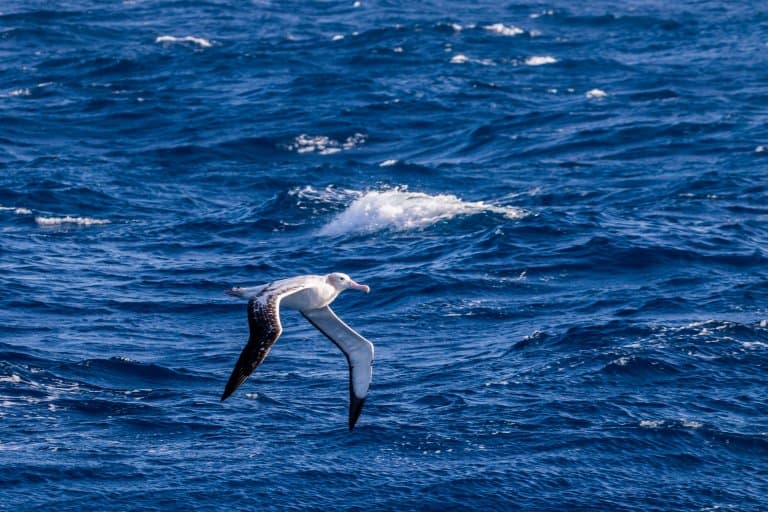
2. They’re monogamous (mostly)
This goes against the entire theme of the Del Satins song and is probably why it’s no longer used as a learning aid in the zoological curriculum.
Contrary to the promiscuous subject of the ‘60s hit, the Wandering Albatrosses mate for life and are (on average) monogamous.
When breeding, they take on incubation shifts, and it’s during these periods when the wanderer goes out on their epic voyages to return with food for their family.
Still, there’s an element of personal preference when it comes to breeding.
Most females will take a year or two off after the long and arduous task of reproduction. During this time the parents will go their separate ways, only to reunite when the time is right.
In these periods, some females will take on a temporary mate, so they can squeeze out one more chick before reuniting with their permanent nesting partner. 2
3. Wandering albatross are active in moonlight
When on these journeys, the albatross is almost constantly active. During the day they spend the entire time in the air, and while they don’t cover much distance at night, they were still recorded almost constantly moving – never stopping for more than 1.6h in the dark.
They appear to travel more on moonlit nights than on darker ones.
All of this data comes from satellite trackers attached to some birds, which are always going to skew the results.
Flying birds are optimised for weight, and trackers add to this weight, so there’s necessarily a negative effect on the individual’s fitness when lumbering them with a tracker.
Still, these subjects were able to outlast the trackers’ batteries on many occasions, and it’s safe to assume they’re capable of even more than we can realistically measure!

4. They have the largest wingspan of any bird in the world
One advantage that an albatross has over, say, a pigeon, when it comes to carrying a researcher’s hardware, is that it doesn’t need to flap much.
The albatross is the bird with the longest wingspan of any flying animal – growing up to 3.2 m (10.5 ft), and these wings are meticulously adapted for soaring.
The Guiness Book of Records claims the largest wingspan of any living species of bird was a wandering albatross with a wingspan of 3.63m (11 ft 11) caught in 1965 by scientists on the Antarctic research ship USNS Eltanin in the Tasman Sea.
Research has suggested that these wings function best against slight headwinds, and act like the sails of a boat, allowing the bird to cover more ground by “tacking”, like a sailboat: zig-zagging across the angle of the wind to make forward progress into it. 3
5. Fat chicks
As mentioned, these voyages are usually a result of foraging trips for their chicks.
The environment for a growing albatross is one of the least conducive for life. Freezing winter storms and exposed ledges make for a hilly upbringing for the baby birds.
Fed on a healthy diet of regurgitated squid, these albatross chicks grow to enormous sizes. On nesting sites, it’s not uncommon to find a fluffy baby albatross weighing up to 10kg.
These chicks are heavier than their parents, and they need the extra mass to protect them from the Winter season while they grow into fledglings. They’re also such big birds that they take longer than a season to reach maturity.
It takes around ten months of feeding, back and forth from the ocean every few days, for the parents to grow a healthy adult offspring.
6. Being a parent takes practice
When inexperienced parents were compared with those who’d brought up chicks before, it was found that their chicks are a little slower to fatten up, at least in the first few months.
Parents would feed less regularly, but with much larger amounts, and it seems to take a while to get the routine down.
By the end of the breeding season, these differences disappeared and the parents became fully qualified.
7. 25% of chicks die when they leave the colony
The huge chicks have one of the longest rearing periods of any bird, and this is after an 11-month incubation period! And if they survive all this, they still have a long way to go.
There’s a period of 3 to 7 years during which the young chick will leave the colony alone and spend the entire time at sea.
During the first two months of this learning phase, 25% of chicks die. This is a critical time for the young birds, but if they survive, they’ll return to the colony and find a mate. 4

8. They’re good sniffers
These birds feed primarily on smelly things like squid, and they’ve developed a very keen sense of smell to find them from downwind.
Wandering Albatrosses have one of the largest olfactory bulbs of any bird and they’re honed to fishy aromas.
They combine this sense with strong vision to identify productive areas of the ocean for hunting and foraging. 5
9. They are part of a ‘species complex’
When multiple species are so similar in appearance and other features, it makes their boundaries unclear and this group is known as a species complex.
The wandering albatross was long considered the same species as the Tristan albatross and the Antipodean albatross. Along with the Amsterdam albatross, they form a species complex.
Taxonomy of animals in general is tricky, and some researchers still describe them as the same species.
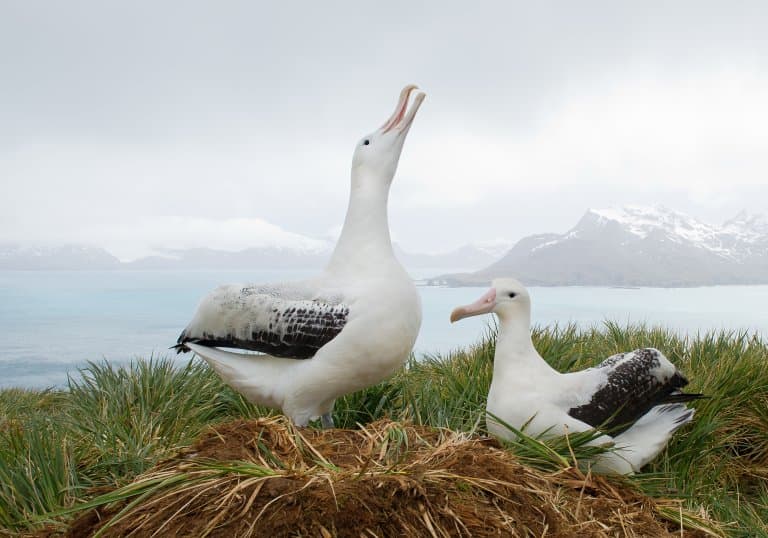
10. The wandering albatross is vulnerable
The ICUN has classified the wandering albatross as vulnerable, and the last study of their population size in 2007 indicated there were an estimated 25,000 birds.
The biggest threat to their survival is fishing, in particular longline fishing. This is where a long mainline is used with baited hooks, and they are prone to accidental catching of birds, as well as dolphins, sharks, turtles and other sea creatures. Pollution, mainly from plastics and fishing hooks is also a problem for birds such as the wandering albatross.
Convervation efforts are underway to reduce bycatch of albatrosses and some breeding islands are now classified as nature reserves.
Wandering Albatross Fact-File Summary
Scientific classification, fact sources & references.
- Jouventin, P., Weimerskirch, H (1990), “ Satellite tracking of Wandering albatrosses “, Nature.
- GrrlScientist (2022), “ Divorce Is More Common In Albatross Couples With Shy Males, Study Finds “, Forbes.
- Richardson, P. L., Wakefield, E. D., & Phillips, R. A. (2018), “ Flight speed and performance of the wandering albatross with respect to wind “, Movement Ecology.
- Weimerskirch, H., Cherel, Y., Delord, K., Jaeger, A., Patrick, S. C., & Riotte-Lambert, L. (2014), “ Lifetime foraging patterns of the wandering albatross: Life on the move! “, Journal of Experimental Marine Biology and Ecology.
- Nevitt, G. A., Losekoot, M., & Weimerskirch, H. (2008), “ Evidence for olfactory search in wandering albatross, Diomedea exulans “, Proceedings of the National Academy of Sciences.
Smithsonian Ocean
Wandering albatross.

A wandering albatross has the largest wingspan of any bird, 3.5 meters (11.5 feet) tip to wing tip.
- Make Way for Whales
- Sharks & Rays
- Invertebrates
- Plants & Algae
- Coral Reefs
- Coasts & Shallow Water
- Census of Marine Life
- Tides & Currents
- Waves, Storms & Tsunamis
- The Seafloor
- Temperature & Chemistry
- Ancient Seas
- Extinctions
- The Anthropocene
- Habitat Destruction
- Invasive Species
- Acidification
- Climate Change
- Gulf Oil Spill
- Solutions & Success Stories
- Get Involved
- Books, Film & The Arts
- Exploration
- History & Cultures
- At The Museum
Search Smithsonian Ocean
Wandering Albatross
These remarkably efficient gliders, named after the Greek hero Diomedes, have the largest wingspan of any bird on the planet
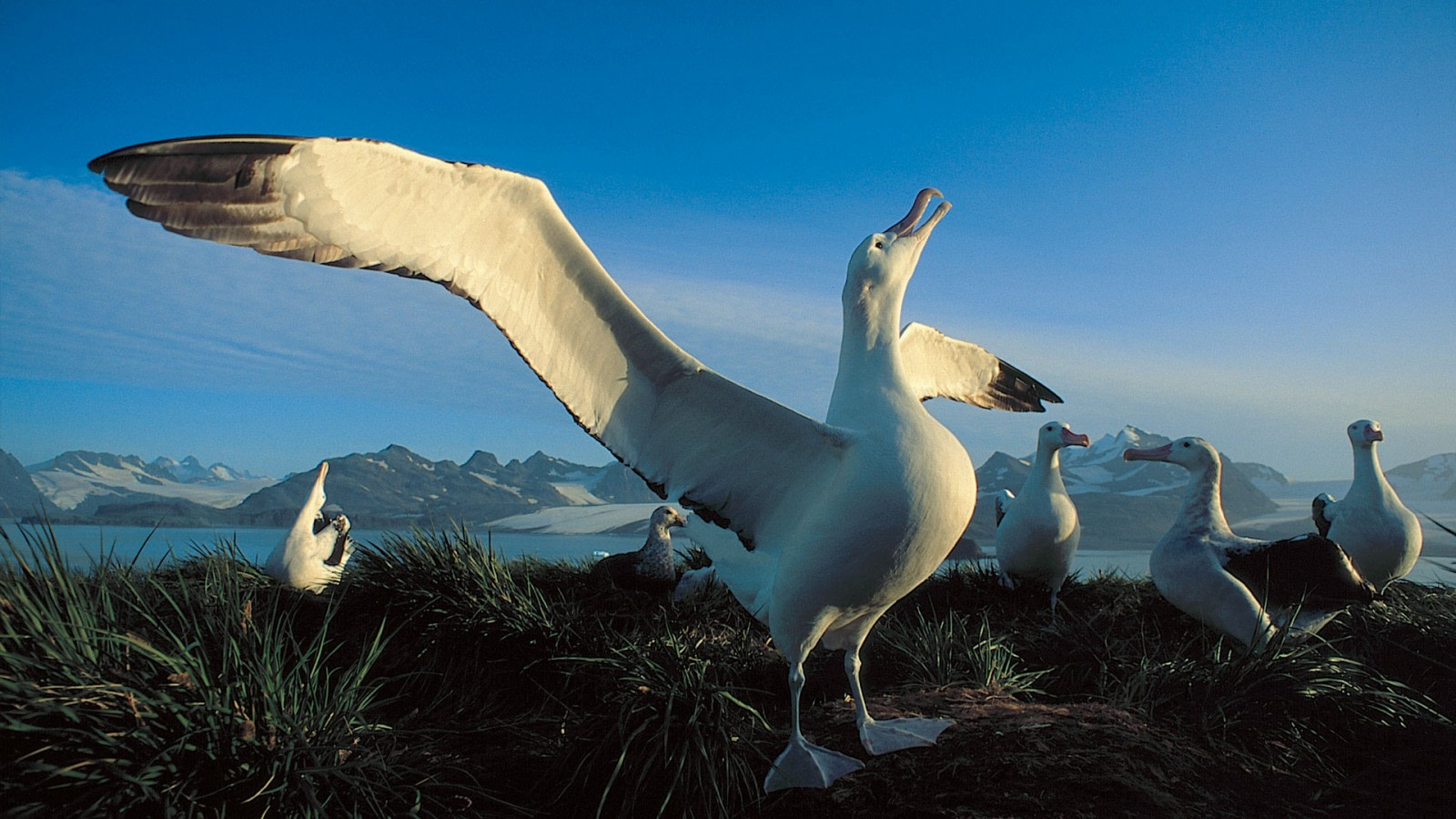
Region: Antarctica
Destinations: Bouvet Island, Antarctic Peninsula, South Georgia
Name : Wandering Albatross, Snowy Albatross, White-winged Albatross ( Diomedea exulans )
Length: Up to 135 cm.
Weight : 6 to 12kg.
Location : All oceans except in the North Atlantic.
Conservation status : Vulnerable.
Diet : Cephalopods, small fish, crustaceans.
Appearance : White with grey-black wings, hooked bill.
How do Wandering Albatrosses feed?
Wandering Albatrosses make shallow dives when hunting. They’ll also attempt to eat almost anything they come across and will follow ships in the hopes of feeding on its garbage. They can gorge themselves so much that they become unable to fly and just have to float on the water.
How fast do Wandering Albatrosses fly?
Wandering Albatrosses can fly up to 40 km per hour.
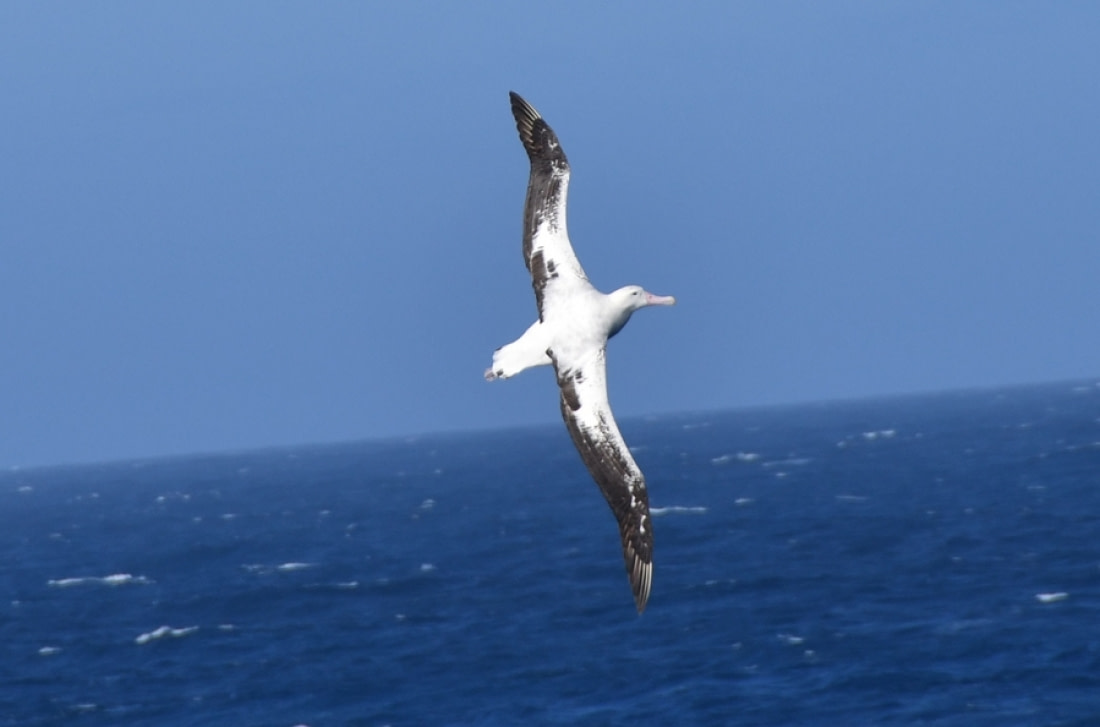
What are Wandering Albatross mating rituals like?
Wandering Albatrosses mature sexually around 11 years of age. When courting, the male Wandering Albatross will spread his wings, wave his head around, and rap his bills against that of the female while making a braying noise. The pair will mate for life, breeding every 2 years. Mating season starts in early November with the Albatrosses creating nests of mud and grass on one of the Sub-Antarctic islands. The female will lay 1 egg about 10 cm long, sometime between the middle of December and early January. Incubation takes around 11 weeks, the parents taking turns. Once the chick is born the adults switch off between hunting and staying to care for the chick. The hunting parent returns to regurgitate stomach oil for the chick to feed on. Eventually both parents will start to hunt at the same time, visiting with the chick at widening intervals.
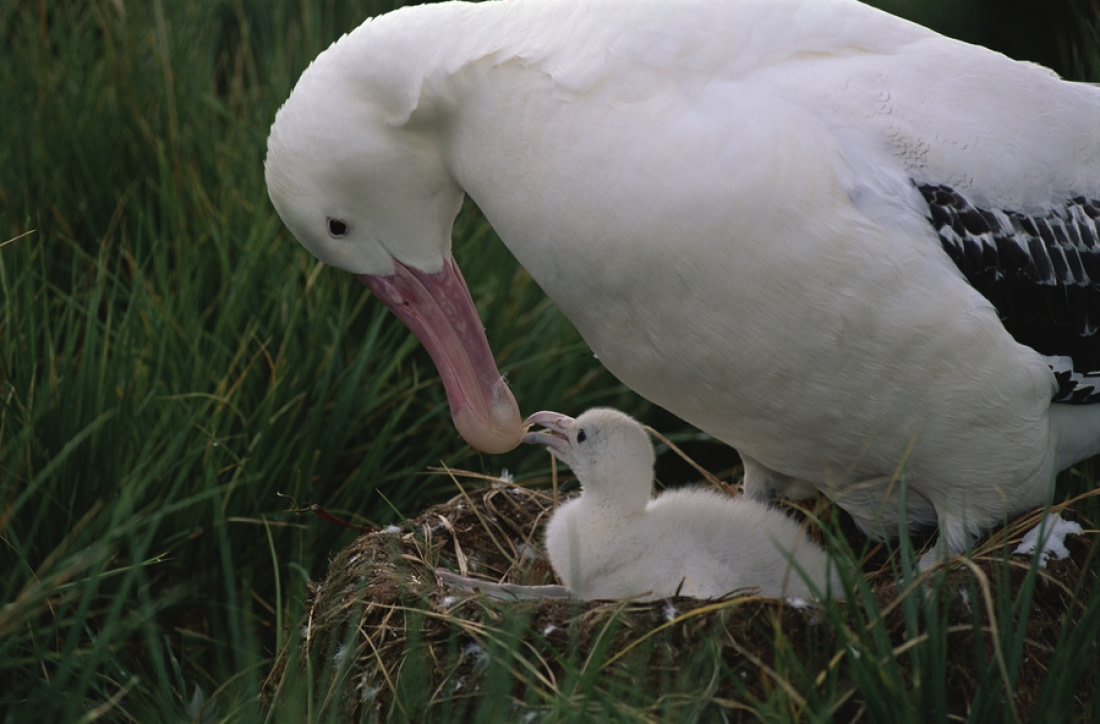
How long do Wandering Albatrosses live?
Wandering Albatrosses can live for over 50 years.
How many Wandering Albatrosses are there today?
There are about 25.200 adult Wandering Albatrosses in the world today.
Do Wandering Albatrosses have any natural predators?
Because they’re so big and spend almost all of their lives in flight, Wandering Albatrosses have almost no natural predators.
7 Wonderful Wandering Albatross Facts
- The Wandering Albatross is the largest member of its genus ( Diomedea ) and is one of the largest birds in the world.
- Wandering Albatrosses are also one of the best known and most studied species of birds.
- Diomedea refers to Diomedes, a hero in Greek mythology; of all the Acheaens he and Ajax were 2 nd only to Achilles in prowess. In mythology all of his companions turned into birds. Exulans is Latin for “exile” or “wanderer.”
- Wandering Albatrosses have the largest wingspan of any bird in the world today, stretching up to 3.5 metres across.
- Wandering Albatrosses are great gliders – they can soar through the sky without flapping their wings for several hours at a time. They’re so efficient at flying that they can actually use up less energy in the air than they would while sitting in a nest.
- Wandering Albatrosses have a special gland above their nasal passage that excretes a high saline solution. This helps keep salt level in their body, combating all the salt water they take in.
- Wandering Albatrosses get whiter the older they get.

Related cruises
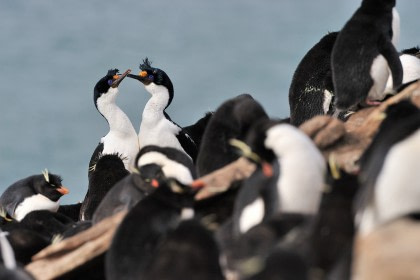
Falkland Islands - South Georgia - Antarctica
Meet at least six penguin species!
PLA20-24 A cruise to the Falkland Islands, South Georgia & the Antarctic Peninsula. Visit some of the most beautiful arrays of wildlife on Earth. This journey will introduce you to at least 6 species of penguin and a whole lot of Antarctic fur seals!
m/v Plancius
Cruise date:
18 Oct - 7 Nov, 2024
Berths start from:
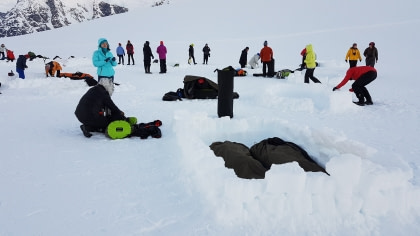
Antarctica - Basecamp - free camping, kayaking, snowshoe/hiking, photo workshop, mountaineering
The best activity voyage in Antarctica
HDS21a24 The Antarctic Peninsula Basecamp cruise offers you a myriad of ways to explore and enjoy the Antarctic Region. This expedition allows you to hike, snowshoe, kayak, go mountaineering, and even camp out under the Southern Polar skies.
m/v Hondius
1 Nov - 13 Nov, 2024
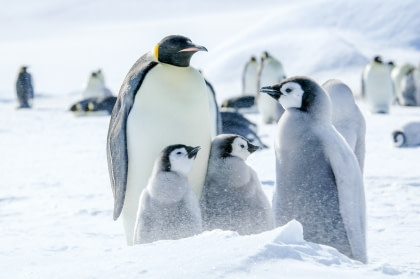
Weddell Sea – In search of the Emperor Penguin, incl. helicopters
Searching for the Elusive Emperor Penguins
OTL22-24 A true expedition, our Weddell Sea cruise sets out to explore the range of the Emperor Penguins near Snow Hill Island. We will visit the area via helicopter and see a variety of other birds and penguins including Adélies and Gentoos.
m/v Ortelius
10 Nov - 20 Nov, 2024
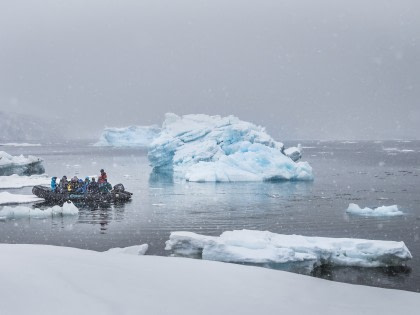
OTL23-24 A true expedition, our Weddell Sea cruise sets out to explore the range of the Emperor Penguins near Snow Hill Island. We will visit the area via helicopter and see a variety of other birds and penguins including Adélies and Gentoos.
20 Nov - 30 Nov, 2024
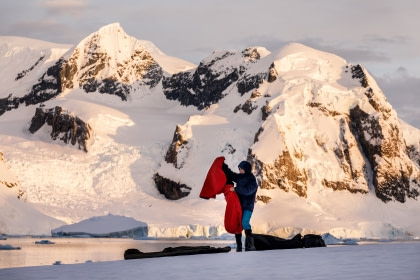
Antarctica - Basecamp - free camping, kayaking, snowshoe/hiking, mountaineering, photo workshop
HDS23-24 The Antarctic Peninsula Basecamp cruise offers you a myriad of ways to explore and enjoy the Antarctic Region. This expedition allows you to hike, snowshoe, kayak, go mountaineering, and even camp out under the Southern Polar skies.
23 Nov - 5 Dec, 2024
We have a total of 62 cruises

The massive Wandering Albatross is one of the largest birds in the world — the largest when measured by some metrics — and one of the two largest members of the Diomedea family of birds. But how large is “largest,” and how does that compare with other birds in the world?
- Wandering Albatross
The Wandering Albatross is found in South Georgia in Africa but is a far-ranging bird. It’s known as the ‘wandering’ albatross due to its love for the sky. These birds spend most of their lives in flight, landing only to eat and breed.
Some Wandering Albatrosses were found to circumnavigate the entire Southern Ocean up to three times a year, and a banded Wandering Albatross was once recorded, traveling 3,700 miles in just 12 days.
As a result, these birds can be found in many different subantarctic islands throughout the year, including the Southern Georgian Islands, Kerguelen Islands, and as far out as the Macquarie Islands.
- Wandering Albatross Wingspan
The Wandering Albatross has the largest wingspan of any bird globally, typically clocking in between 99 and 138 inches! One of the birds was even measured with a wingspan of 146 inches!
https://www.instagram.com/p/B5-MDEcBWuG/
- How Is Wingspan Measured?
The wingspan is measured from the tip of the longest primary feather of one wing to the opposite feather. The specimen will need to be held down on its stomach; the wrist and ankle joints of the wing will be held still while the measuring takes place.
- Wandering Albatross Wingspan Compared to Other Birds of Prey
The Wandering Albatross wingspan is the largest in the world. Albatrosses are giant birds in general in this respect; six of the top 10 longest wingspans belong to albatrosses. The Wandering Albatross is rivaled by the Great White Pelican, which comes in second place by over 6 inches on average. Of the top five longest wingspans, three belong to other species of albatross, with the remaining two being pelicans.
While some birds have a longer maximum wingspan on average, the Wandering Albatross reigns supreme in minimum length, giving it a staggering 122-inch average wingspan.
https://www.instagram.com/p/B4BsBW8HnJO/
- Are All Bird Wings the Same?
Bird wingspans, shapes, and sizes are determined by the bird’s environment and dietary needs. The shapes and sizes of their wings depend on how far and how fast they need to fly or glide. Smaller, rounded wings are suitable for fast take-offs. Long, pointed wings are good for reaching high speeds, while long, narrow wings are good for soaring over the water.
Albatrosses spend most of their lives in the air, soaring over the ocean for most of their lives. As a result, their wings are long and somewhat broad, making them suitable for catching thermal updrafts over the sea. They take a good amount of energy to move and flap, so soaring without moving their wings allows them to conserve energy as they move.
Albatross wings are so long that they can travel over 72 feet forward before they lose three feet of altitude as they fly. In this way, they can travel hundreds of miles a day and hundreds of thousands of miles a year.
Their long travel distances have caused some to suggest that they sleep while flying, but geolocator bands have shown that this is not true. While some birds have been observed sleeping while flying, Albatrosses seem to land in the water to sleep and resume flying when they wake.
- In Conclusion
There are few birds so majestically large as the Wandering Albatross, though not for lack of trying. The Wandering Albatross is currently listed as a vulnerable species, with many populations in steep decline. We should all be working together to maintain and revitalize these gorgeous birds.
Looking for information on different wingspans? Check out:
- Hawk Wingspan: How Big It Is & How It Compares to Other Birds
- Andean Condor Wingspan: How Big it Is & How it Compares to Other Birds
Featured Image Credit: Hugh Lansdown, Shutterstock
Table of Contents
About the Author Robert Sparks
Robert’s obsession with all things optical started early in life, when his optician father would bring home prototypes for Robert to play with. Nowadays, Robert is dedicated to helping others find the right optics for their needs. His hobbies include astronomy, astrophysics, and model building. Originally from Newark, NJ, he resides in Santa Fe, New Mexico, where the nighttime skies are filled with glittering stars.
Related Articles:
How to Collimate Binoculars: 9 Expert Tips
Binocular Magnification Chart: Numbers & Distances Compared
How to Clean a Refractor Telescope: Step-by-Step Guide
How to Clean a Telescope Eyepiece: Step-by-Step Guide
How to Clean a Rifle Scope: 8 Expert Tips
When Were Binoculars Invented? History, Today & Future
Can You Use Binoculars to Look At Stars? How to Choose the Right Pair
How to Choose Binoculars for Bird Watching: 10 Expert Tips

Woods Hole, Mass. — Wandering albatrosses, which are an iconic sight in the Southern Ocean, are highly adapted to long-distance soaring flight. Their wingspan of up to 11 feet is the largest known of any living bird, and yet wandering albatrosses fly while hardly flapping their wings. Instead, they depend on dynamic soaring—which exploits wind shear near the ocean surface to gain energy—in addition to updrafts and turbulence.
Now researchers, including Philip Richardson , a senior scientist emeritus in Physical Oceanography Department at the Woods Hole Oceanographic Institution (WHOI), are unlocking more clues about exactly how wandering albatrosses are such amazing flyers.
In a new paper analyzing GPS tracks of wandering albatrosses, researchers have found that the birds’ airspeed increases with wind speed up to a maximum airspeed of 20 meters per second (m/s; 45 mph). Researchers developed a model of dynamic soaring, which predicts that the birds could fly much faster than 20 m/s. The paper concludes that the birds limit their airspeed by adjusting the turns in their trajectories to be around 60°, and that in low winds the birds exploit updrafts over waves to supplement dynamic soaring.
“We hypothesize that wandering albatrosses limit their maximum across-wind airspeeds to ~ 20 m/s in higher wind speeds (and greater wind turbulence), probably to keep the aerodynamic force on their wings during dynamic soaring well below the mechanically-tolerable limits of wing strength,” according to the paper, “Observations and Models of Across-wind Flight Speed of the Wandering Albatross,” published in the journal Royal Society Open Science .
The paper adds that, given the complex field of wind waves and swell waves often present in the Southern Ocean, “it is also possible that birds find it increasingly difficult to coordinate dynamic soaring maneuvers at faster speeds.”
Regarding low flight speeds by albatrosses, the paper notes that a theoretical model predicted that the minimum wind speed necessary to support dynamic soaring is greater than 3 m/s. “Despite this, tracked albatrosses were observed in flight at wind speeds as low as 2 m/s. We hypothesize at these very low wind speeds, wandering albatrosses fly by obtaining additional energy from updrafts over water waves,” according to the paper.
“We tried to figure out how these birds are using the winds to go long distances—without overstressing their wings—for foraging for food and returning to feed their chicks. To do that, we modeled dynamic soaring and what different turn angles would do to stress on the birds’ wings and speed over the water,” said journal paper co-author Richardson. A dynamic soaring trajectory is an s-shaped maneuver consisting of a series of connected turns, he noted.
“This research is a step in the direction of understanding how wandering albatrosses are able to do these foraging trips and maintain a fairly large population. These birds figured out an amazing way to use the wind to almost effortlessly soar for thousands of miles over the ocean. We wanted to find out exactly how they did it,” he said.
In addition to learning more about albatrosses, the study could have broader implications for helping researchers better understand how to use dynamic soaring to power potential albatross-type gliders to observe ocean conditions, Richardson added.
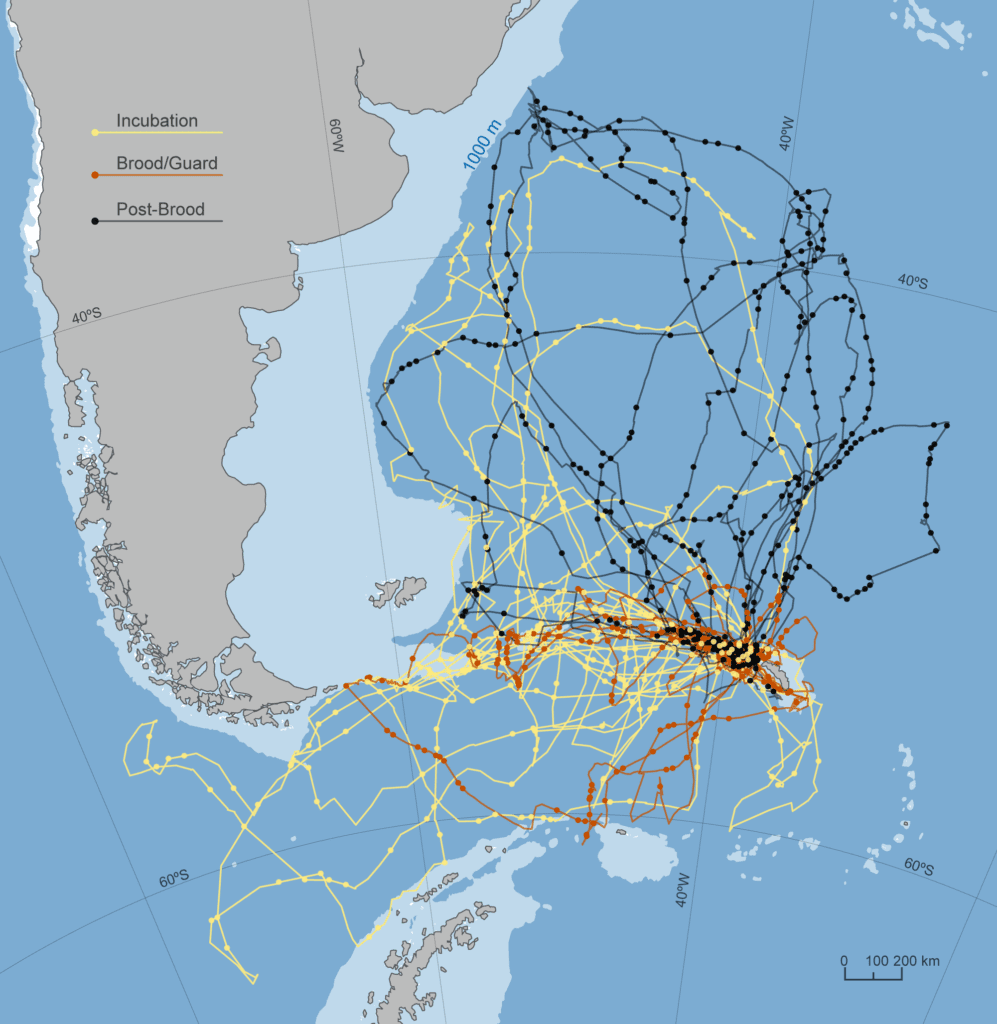
Trajectories of breeding wandering albatrosses nesting on South Georgia Island in the South Atlantic. These birds are highly adapted to long-distance soaring flight assisted by a wingspan of up to 11 feet--the largest known of any living bird. They use the winds to soar thousands of miles seeking food to bring back to nourish their chicks. (Map by Natalie Renier, ©Woods Hole Oceanographic Institution)
For the study, researchers used GPS to track 46 wandering albatrosses during foraging trips the birds made between February to September 2004. The birds were breeding on Bird Island, which is off the northwest tip of South Georgia in the Southern Atlantic Ocean. Wandering albatrosses lack sufficient musculature to sustain continuous flapping flight for long periods of time; however they have a shoulder lock that mechanically holds their wings outstretched so that little energy is expended while soaring, according to the paper.
Since the earliest days of scientific inquiry, the way that many birds are able soar—that is, fly without flapping their wings—has fascinated and perplexed observers, said paper co-author Ewan D. Wakefield , affiliate researcher at the University of Glasgow and postdoctoral research associate at the University of Durham, UK. Wandering albatrosses are particularly remarkable for their ability to soar over the surface of the sea for long periods, covering vast distances, Wakefield said. He added that the physical principles explaining dynamic soaring flight were established over a century ago: Basically, albatrosses swoop up and down between layers of fast and slow moving air near the surface of the sea, gaining airspeed each time they do so.
“However, as our study shows, real-world albatross flight differs considerably from the predictions of simple physical models,” Wakefield said. “On the one hand, our GPS-tracking data show that they can and do fly in lighter winds than dynamic soaring models say should be possible. We suspect that this is because they can also fly by surfing updrafts created by the large waves that constantly surge around their Southern Ocean home. On the other hand, the upper limit of albatrosses' airspeed that we measured is much slower than physics predicts. We think that this is because albatrosses need to keep the forces on their wings within tolerable limits. After all, they're made from bone and muscle, not aluminum and titanium. Our study therefore points to ways in which theoretical models need to be refined to capture more faithfully the amazing complexity and beauty of albatross flight.”
Richardson recalled being entranced by wandering albatrosses ever since he observed them during a 1997 oceanographic cruise in the South Atlantic Ocean. “We were steaming upwind at 15 knots, pounding into waves, and these albatrosses caught up to us from astern and were cruising around and having a grand old time,” Richardson said. “I sat there for hours watching these birds in amazement, and wondering how they could fly like that. Now we are learning more about how they do it.”
Funding for this research was provided by the Woods Hole Oceanographic Institution emeritus fund and the UK Natural Environment Research Council.
Authors: Philip L. Richardson 1 and Ewan D. Wakefield 2
Affiliations:
1 Department of Physical Oceanography, Woods Hole Oceanographic Institution, Woods Hole, MA, USA
2 Institute of Biodiversity, Animal Health and Comparative Medicine, University of Glasgow, Glasgow, UK
About Woods Hole Oceanographic Institution
The Woods Hole Oceanographic Institution (WHOI) is a private, non-profit organization on Cape Cod, Massachusetts, dedicated to marine research, engineering, and higher education. Established in 1930, its primary mission is to understand the ocean and its interaction with the Earth as a whole, and to communicate an understanding of the ocean’s role in the changing global environment. WHOI’s pioneering discoveries stem from an ideal combination of science and engineering—one that has made it one of the most trusted and technically advanced leaders in basic and applied ocean research and exploration anywhere. WHOI is known for its multidisciplinary approach, superior ship operations, and unparalleled deep-sea robotics capabilities. We play a leading role in ocean observation and operate the most extensive suite of data-gathering platforms in the world. Top scientists, engineers, and students collaborate on more than 800 concurrent projects worldwide—both above and below the waves—pushing the boundaries of knowledge and possibility. For more information, please visit www.whoi.edu
Key takeaways:
- By analyzing GPS tracks of wandering albatrosses, researchers have found that the birds’ airspeed increases with wind speed up to a maximum of 20 meters per second (45 miles per hour).
- Researchers developed a model of dynamic soaring, which predicts that the birds could fly much faster than 20 meters per second (m/s). However, researchers hypothesize that the birds limit their maximum across-wind airspeeds to about 20 m/s in higher wind speeds (and greater wind turbulence), probably to keep the aerodynamic force on their wings during dynamic soaring well below the mechanically-tolerable limits of wing strength.
- The paper concludes that the birds limit airspeed by adjusting the turns in their trajectories to be around 60° and that in low winds the birds exploit updrafts over waves to supplement dynamic soaring.
- Although a theoretical model predicted that the minimum wind speed necessary to support dynamic soaring is greater than 3 meters per second (m/s), GPS-tracked albatrosses were observed in flight at wind speeds as low as 2 m/s. Researchers hypothesize at these very low wind speeds, wandering albatrosses fly by obtaining additional energy from updrafts over water waves.
- The study points to ways in which theoretical models need to be refined to capture more faithfully the amazing complexity and beauty of albatross flight.
You are using an outdated browser. Please upgrade your browser to improve your experience and security.

- Buy Tickets
- Join & Give
Wandering Albatross
- Updated 28/07/23
- Read time 2 minutes
- Share this page:
- Share on Facebook
- Share on Twitter
- Share on Linkedin
- Share via Email
- Print this page

- IUCN Conservation Status VULNERABLE (VU)
- Classification Genus Diomedea Species exulans Family Diomedeidae Order Procellariiformes Class Aves
- Size Range 80 cm to 135 cm
The Wandering Albatross is the largest of the albatrosses and is the living bird with the greatest wingspan, measuring almost 3.5 m.
What do Wandering Albatrosses look like?
Identification.
The adult Wandering Albatross appears entirely white from a distance. Close up, the fine black wavy lines on the breast, neck and upper back become visible. The bill can vary in colour, but is normally yellowish-pink. The white tail is occasionally tipped with black and the back of the wing changes from black to white with age. A series of plumage phases are passed through as young birds reach full adult plumage, which can take up to nine years. Females are slightly smaller than males.
Where do Wandering Albatrosses live?
Wandering Albatrosses spend most of their life in flight, landing only to breed and feed. Distances travelled each year are hard to measure, but one banded bird was recorded travelling 6000 km in twelve days.
Distribution
The Wandering Albatross visits Australian waters from Fremantle, Western Australia to northern New South Wales between June and September each year. At other times birds roam the southern oceans and commonly follow fishing boats for several days.
What do Wandering Albatrosses eat?
Feeding and diet.
Wandering Albatrosses are often seen scavenging scraps from fishing boats, but squid and fish are the preferred foods. Galley refuse and floating waste also form part of the diet. Feeding is one of the few times that birds land, and this is mostly undertaken at night.
What are Wandering Albatrosses breeding behaviours?
Breeding behaviour/s.
Pairs of Wandering Albatrosses mate for life and breed every two years. Breeding takes place on subantarctic islands and commences in early November. The nest is a mound of mud and vegetation, and is placed on an exposed ridge near the sea. During the early stages of the chick's development, the parents take turns to sit on the nest while the other searches for food. Later, both adults hunt for food and visit the chick at irregular intervals.
Breeding Season: November.

The Australian Museum respects and acknowledges the Gadigal people as the First Peoples and Traditional Custodians of the land and waterways on which the Museum stands.
Image credit: gadigal yilimung (shield) made by Uncle Charles Chicka Madden

- Frogs in USA
- Bats in USA
- Lizards in USA
- Turtles in USA
- Hawks, Eagles, and Falcons in USA
- Birds in USA
- Woodpeckers in USA
- Hummingbirds in USA
- Owls in USA
- Hummingbird
- Desert Birds
- Colorful Birds
- Fastest Birds
- Birds of Prey
- Dangerous Birds
- Birds That Lay Blue Eggs
- Birds Around the World
- Birds That Sing at Night
- Birds by Color
- Crested Birds
- Alpine Birds
- Smartest Birds
- Herbivorous Birds
- Antarctic Birds
- Arctic Birds
- Poisonous Birds
- Longest Living Birds
- Birds That Mate For Life
- Long-Legged Birds
- Long-tailed Birds
- Diving Birds
- Birds That Eat Mosquitoes
- Fish-eating Birds
- Mountain Birds
- Small Birds
- Whistling Birds
- Nocturnal Birds
- Grasshopper
- South American
- North American
- Sonoran Desert
- Live in Lakes
- Deciduous Forest
- Temperate Forest
- Small Animals
- Hybrid Animals
- Rare Animals
- Monogamous Animals
- Animals that are Carnivorous
- Amazon Rainforest
- Death Valley
- Galápagos Islands
- Animals with Horns
- Animals with Antlers
- Camouflage Animals
- Ice Age Animals
- Animals that Migrate
- Animals with Big Eyes
- Endangered Animals
- Animals that are Omnivorous
- Animals You Can See On a Safari
- Animals Living in the Mariana Trench
- Animals with Long Necks
- Ugly Animals
- Smartest Animals
- Flying Animals
- Dumbest Animals
- Biggest Animals in the World
- Animals that Hibernate
- Fastest Animals in the World
- Hoofed Animals
- Animals that are Herbivorous
- Fluffy Animals
- Extinct Animals
- Melanistic Animals
- Longest Living Animals
- Animals That Mate For Life
- Ruminant Animals
- Scary Animals
- Poisonous Animals
- Colorful Animals
- Asexual Animals
- Animals that Burrow
- Fat Animals
- Dangerous Animals
- Slow Animals
- Nocturnal Animals
- Strong Animals
- Gay Animals
- Weird Animals
- Black Birds in Florida
- Beautiful Animals
- Animals That Lay Eggs (Oviparous Animals)
- Animals Living in Death Valley
- Yellowstone National Park
- Domestic Animals
- Land Animals
- Animals That Kill the Most Humans
Wandering Albatross
Table of Contents
Scientific Classification
Table of content.
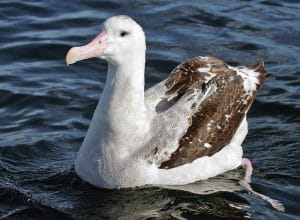
Physical Description
Size : They measure at around 3 ft 6 in to 4 ft 5 in (1.07-1.35 m).
Weight : Adult wandering albatrosses typically weigh between 13 and 28 lbs (5.9-12.7 kg).
Color : The plumage for juveniles is chocolate brown which becomes whiter with age. The wings in adults are white with black around the tips while the female’s wings have more black on them. The bill and feet are pink.
Sexual Dimorphism : Males are a little bit larger than females.
Wingspan : They have the largest wingspan among birds , measuring at around 8 ft 3 in to 11 ft 6 in (2.51-3.5 m).
The two recognized subspecies of the wandering albatross are D. e. exulans (nominate subspecies) and the D. e. gibsoni (also known as Gibson’s albatross).
Distribution
The breeding range for the wandering albatross includes South Georgia Island, Crozet Islands, Prince Edward Islands, Kerguelen Islands, and Macquarie Islands. It also feeds around the Kaikoura Peninsula on New Zealand’s South Island east coast.
They inhabit subantarctic islands with tussock grass, sedges, shrubs, mosses and peat soils. They nest on ridges, plateaus, valleys, and plains.
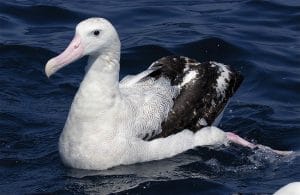
Wandering Albatross Pictures
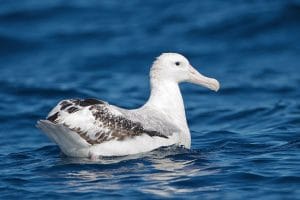
Wandering Albatross Images
- These birds spend most of their lives in the air, traveling long distances.
- They live in small groups during their forages in the sea.
- They become rather social during the breeding season.
- They are territorial towards members of the same sex during the breeding season and defend their nesting area with vocalizations.
Wandering albatrosses eat fish, squids, and crustaceans.
Mating & Reproduction
These birds mate for life and mate every other year. Males reach the breeding grounds before females and locate the same nesting sites they had used the previous season, although they may also choose to build new ones. Females arrive after males. The breeding season usually occurs between December and March. The female lays one egg per breeding season which is then incubated for 74-85 days. Both parents take part in incubation.
The hatchling stays in its parents’ care for up to 9 months of age, after which they achieve independence. They reach sexual maturity by the time they are 9 years old.
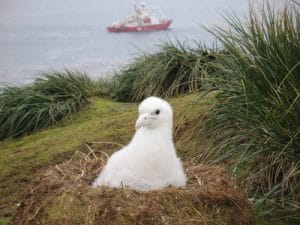
Wandering Albatross Chick
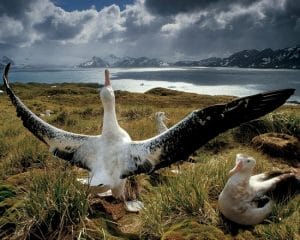
Wandering Albatross Size
Wandering albatrosses can live for up to 50 years.
Sounds & Communication
These birds communicate by croaking, bill-clapping, bill-touching, trumpeting, and pointing towards the sky with their bills.
Adaptations
- The large wings of the wandering albatross help them fly for vast distances over several hours without flapping. For every meter of drop in altitude, they can travel 22 meters in distance.
- The salt gland at the nasal passage helps them desalinate their bodies of the excess salt they come in contact with because of their oceanic lifestyle.
- They can dive up to a meter into the ocean to catch their prey. They, however, prefer to catch the fish from the surface of the ocean.
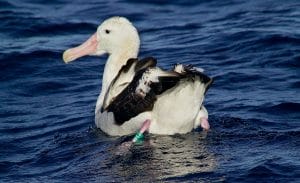
The Wandering Albatross
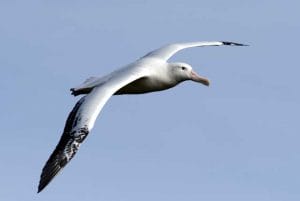
Wandering Albatross Flying
Adult wandering albatrosses have no predators. Eggs, hatchlings, and juveniles, on the other hand, are preyed upon by sheathbills and skuas. In addition to these two, several introduced animals like goats, pigs, rats, mice, and cats also eat the chicks and eggs.
IUCN Conservation Status
The International Union for Conservation of Nature lists the wandering albatross under their ‘Vulnerable’ category.
Interesting Facts
- The wandering albatross is the biggest bird in its genera and one the largest in the world.
- One individual lived to be 60 years old in New Zealand. She was named ‘Grandma.’
- Another banded individual was recorded to have traveled 3,730 miles in just 12 days.
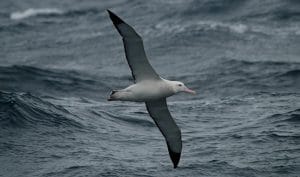
Wandering Albatross Wingspan
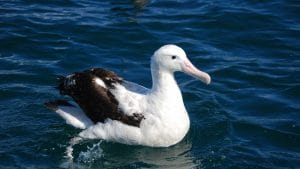
Wandering Albatross Bird
- http://www.coolantarctica.com/Antarctica%20fact%20file/wildlife/wandering-albatross.php https://oceanwide-expeditions.com/to-do/wildlife/wandering-albatross https://beautyofbirds.com/wandering-albatrosses/ http://animaldiversity.org/accounts/Diomedea_exulans/#ff4ee5a1ac2a7a07a049350b7c9b6fbc https://www.britannica.com/animal/albatross#ref243427 http://www.iucnredlist.org/details/22698305/0
Related Articles
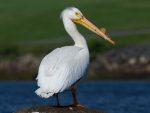
Leave a Reply Cancel reply
Your email address will not be published. Required fields are marked *
Recent Wallpapers

- Invertebrates
Subscribe our newsletter
Follow us on:.
- Privacy Policy
- Animal Habitats
- Animal Memes
© 2024 ( Animal Spot ). All rights reserved. Reproduction in whole or in part without permission is prohibited.

Wandering Albatrosses, Snowy Albatrosses or White-winged Albatrosses
The Wandering Albatrosses , Snowy Albatross , or White-winged Albatross , Diomedea exulans , is a large seabird from the family Diomedeidae which has a circumpolar range in the Southern Ocean.
It was the first species of albatross to be described and was long considered the same species as the Tristan Albatross and the Antipodean Albatross . In fact, a few authors still consider them all subspecies of the same species.
The SACC has a proposal on the table to split this species, and BirdLife International has already split it. Together with the Amsterdam Albatross , it forms the Wandering Albatross species complex.
Table of Contents
The Wandering Albatross is the largest member of the genus Diomedea (the great albatrosses ), one of the largest birds in the world, and is one of the best-known and studied species of bird in the world.

The Wandering Albatross was first described as Diomedea exulans by Carolus Linnaeus, in 1758, based on a specimen from the Cape of Good Hope.
The wandering Albatross has two sub-species as follows
- Diomedea exulans exulans
- Diomedea exulans gibsoni
The Gibsoni subspecies nests on the Azores and Marion Island.
Description
The Wandering Albatrosses has the largest wingspan of any living bird, with a wingspan between 251–350 cm (8.2–11.5 ft). The longest-winged examples verified have been about 3.7 m (12 ft), but probably apocryphal reports of as much as 5.3 m (17 ft) are known.
As a result of its wingspan, it is capable of remaining in the air without beating its wings for several hours at a time (travelling 22 m for every meter of drop). The length of the body is about 107–135 cm (3.5–4.4 ft) with females being slightly smaller than males, and they weigh typically from 6.25–11.3 kg (13.8–24.9 lb).
Immature birds have been recorded weighing as much as 16.1 kg (35 lb) during their first flights.
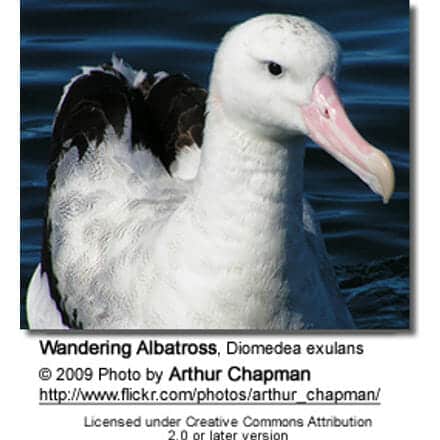
The plumage varies with age, with the juveniles starting chocolate brown. As they age they lose their color and get whiter. The adults have white bodies with black and white wings.
Males have whiter wings than females with just the tips and trailing edges of the wings black. They also show a faint peach spot on the side of the head.
The Wandering Albatrosses is the whitest of the Wandering Albatross species complex, the other species having a great deal more brown and black on the wings and body as breeding adults, very closely resembling immature Wandering Albatrosses. The large bill is pink, as are the feet.
They also have a salt gland that is situated above the nasal passage and helps desalinate their bodies, due to the high amount of ocean water that they imbibe. It excretes a high saline solution from their nose.
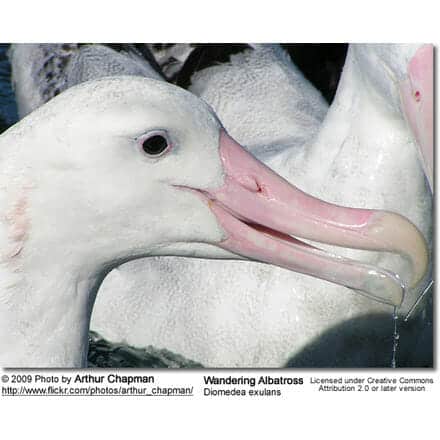
They are a group bird and have a large range of displays from screams and whistles to grunts and bill clapping. When courting they will spread their wings, wave their heads, and rap their bills together, while braying. They live for about 23 years.
They are night feeders and feed on cephalopods, small fish, and crustaceans and on animal refuse that floats on the sea, eating to such excess at times that they are unable to fly and rest helplessly on the water. They are prone to following ships for refuse. They can also make shallow dives.
Reproduction
The Wandering Albatrosses breeds every other year. At breeding time they occupy loose colonies on isolated island groups in the Southern Ocean.
They lay one egg that is white, with a few spots, and is about 10 cm (3.9 in) long. They lay this egg between 10 December and 5 January, in their nests, which is a large bowl built of grassy vegetation and soil peat, that is 1 metre wide at the base and half a metre wide at the apex.
Incubation takes about 11 weeks and both parents are involved. They are a monogamous species, usually for life. Adolescents return to the colony within 6 years; however, they won’t start breeding until 11 to 15 years. About 30% of fledglings survive.
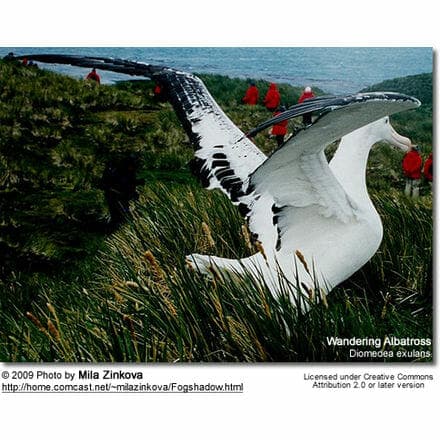
The Wandering Albatross breeds on South Georgia Island, Crozet Islands, Kerguelen Islands, Prince Edward Islands, and Macquarie Island, is seen feeding year round off the Kaikoura Peninsula on the east coast of the south island of New Zealand and it ranges in all the southern oceans from 28° to 60°.
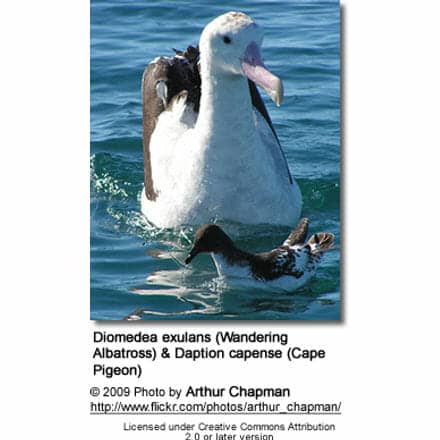
Relationship with humans
Sailors used to capture the birds for their long wing bones, which they manufactured into tobacco pipe stems. The early explorers of the great Southern Sea cheered themselves with the companionship of the albatross in their dreary solitudes, and the evil fate of him who shot with his cross-bow the “bird of good omen” is familiar to readers of Coleridge’s The Rime of the Ancient Mariner .
The metaphor of “an albatross around his neck” also comes from the poem and indicates an unwanted burden causing anxiety or hindrance.
In the days of sail, it often accompanied a ship for days, not merely following it, but wheeling in wide circles around it without ever being observed to land on the water. It continued its flight, apparently untired, in tempestuous as well as moderate weather.
Conservation
The IUCN lists the Wandering Albatross as Vulnerable status. Adult mortality is 5% to 7% per year. It has an occurrence range of 64,700,000 km2 (25,000,000 sq mi), although its breeding range is only 1,900 km2 (730 sq mi).
In 2007, there were an estimated 25,500 adult birds, broken down to 1,553 pairs on South Georgia Island, 1,850 pairs on Prince Edward Island, 1,600 on Marion Island, 2,000 on Crozet Islands, 1,100 on the Kerguelen Islands, and 12 on Macquarie Island for a total of 8,114 breeding pairs.
The South Georgia population is shrinking at 1.8% per year. The levels of birds at Prince Edward and the Crozet Islands seem to be stabilizing although most recently there may be some shrinking of the population.
The biggest threat to their survival is long-line fishing; however, pollution, mainly plastics and fishing hooks, is also taking a toll.
The CCAMLR has introduced measures to reduce the bycatch of Albatrosses around South Georgia by 99%, and other regional fishing commissions are taking similar measures to reduce fatalities. The Prince Edward Islands are a nature preserve, and the Macquarie Islands are a World Heritage site. Finally, large parts of the Crozet Islands and the Kerguelen Islands are nature preserves.

Diomedea exulans can be broken apart into Diomedea which refers to Diomedes (= a hero in Greek mythology) whose companions turned to birds, and exulans or exsul which means an exile or wanderer referring to its lonely distant flights.
- Sarus Crane – the tallest flying bird alive today
- Bustards , which contain the heaviest living flying birds
- Argentavis , the biggest flying bird ever to live
Gordon Ramel
Scolopacidae, long-billed pipits or brown rock pipits, leave a reply cancel reply.
Your email address will not be published. Required fields are marked *
- Ancient Murrelets July 12, 2023
Related Articles
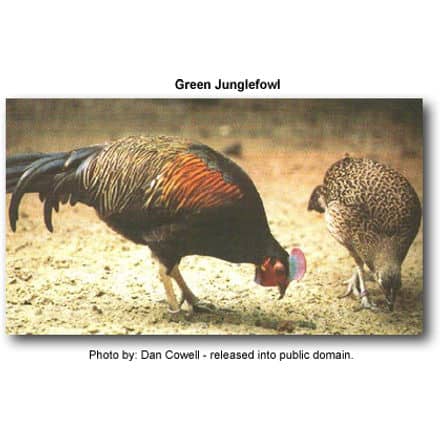
Green Junglefowl, also known as Javan Junglefowl, Forktail or Green Javanese Junglefowl
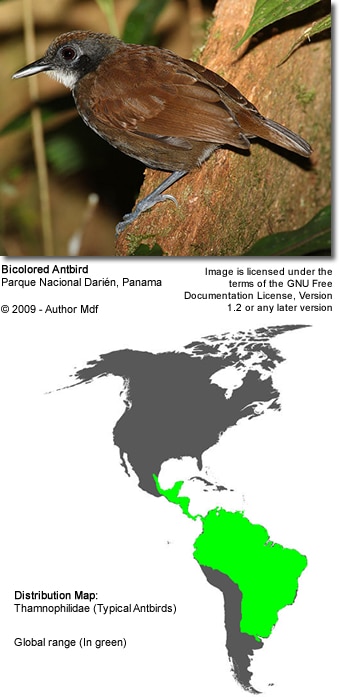
Antbirds (Thamnophilidae)
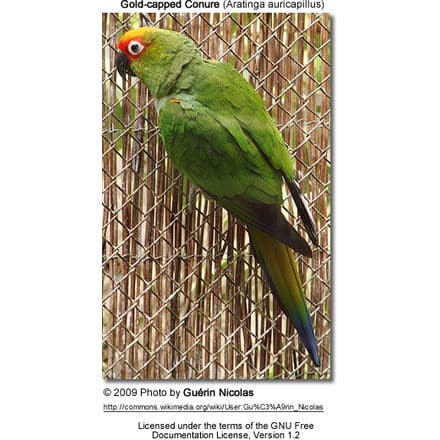
Trumpet Manucode (Phonygammus keraudrenii)
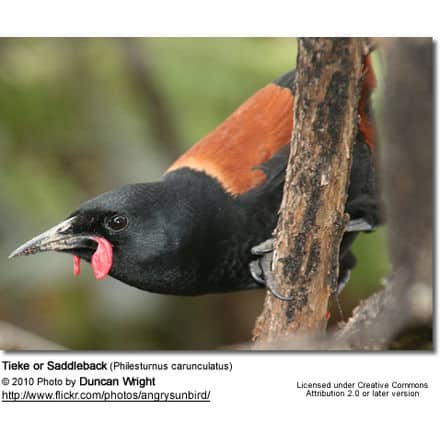
Tieke or Saddleback

Albatross Wingspan Wonders: Surprising Aerial Giants of the Sea
- SuchScience Staff
- December 23, 2023

Albatross Overview
Albatrosses are among the most iconic seabirds , gliding over vast oceanic expanses with a grace that belies their substantial size.
These large birds belong to the family Diomedeidae and are renowned for their impressive wingspans, which are the largest of any bird, allowing them to harness the wind with remarkable efficiency.
In the realm of taxonomy, albatrosses are part of the order Procellariiformes, which also includes shearwaters, petrels, and storm-petrels.
This group of birds is well-adapted for life at sea, possessing special glands to excrete salt and webbed feet for swimming.
This bird family encompasses 22 species, grouped under the scientific name Diomedeidae, spanning four genera.
The Wandering Albatross, famous for having the longest wingspan of any living bird, can reach up to 3.5 meters (11 feet).
When it comes to evolution, albatrosses stand out for having adapted superbly to a pelagic lifestyle.
They can spend years at sea without touching land, and their mating rituals are elaborate and long-lasting; they choose partners with whom they often mate for life.
Related Posts:
- Flying Fish: Gliding Wonders, Not Just Seafood
- Birds Aren’t Just Flying: Unexpected Roles in Ecosystems
- Condors in the City: Urban Wildlife’s Surprising New Neighbors
A little-known fact: albatrosses can even sleep while flying, drifting on air currents for hours with barely a wingbeat.
With keen eyesight and a special technique called ‘dynamic soaring,’ they cover great distances while expending minimal energy, an adaptation that truly showcases their evolutionary prowess.
To learn more about their unique flight abilities, explore the Rayleigh cycle model of albatross flight mechanics .
While they navigate the skies with ease, albatrosses are not immune to challenges.
Changes in wind patterns due to climate shifts have influenced albatross distribution and life-history traits , showing how interconnected they are with Earth’s changing environment.
Physical Characteristics

Albatrosses are renowned for their impressive wingspan, which is critical for their extraordinary flying and soaring capabilities.
They also exhibit significant diversity in size and plumage, contributing to their unique identity among seabirds.
Wingspan and Flying Capabilities
The wingspan of albatrosses is one of the most distinctive features of these majestic birds. The great albatross , including the Royal Albatross ( Diomedea exulans ), can boast a wingspan reaching over 3 meters.
This expansive wingspan facilitates a specialized flying technique known as dynamic soaring , which enables them to glide effortlessly over the ocean for hours or even sleep while flying without flapping their wings.
Size, Weight, and Plumage
In terms of size, albatrosses range from the smaller mollymawks to the much larger great albatrosses .
The weights of these birds can also be quite varied, with some larger species like the Royal Albatross weighing up to a hefty 8 to 9 kilograms.
Their plumage generally appears in shades ranging from the sooty hues of the sooty albatrosses to the mostly white feathers with beautiful black accents found in other species.
The softness of an albatross’s feathers and the presence of down allow it to withstand the harsh conditions of the marine environment while maintaining optimum insulation.
Behavior and Ecology

Albatrosses are mariners of the sky, gliding effortlessly over vast ocean stretches.
Their behavior and ecology are intricately tied to their marine environment, relying on wind patterns and oceanic productivity to survive and reproduce.
Breeding and Reproduction
The albatross’s life revolves significantly around their breeding habits which include elaborate mating dances and long-term pair bonds.
They tend to reach sexual maturity around the age of 5, but usually do not breed until several years later.
Breeding involves a ritual of coordinated dances and calls to attract a mate.
Once a pair bond is formed, it can last a lifetime, although the divorce rate in these birds is notable, possibly due to breeding success or failures.
- Nesting : Albatrosses are colonial, with many returning to their birthplace to form nesting colonies on remote islands.
- Reproduction : A single egg is laid, and both parents share incubation duties.
- Chick Rearing : After the chick hatches, parents alternate between foraging at sea and caring for the offspring.
Feeding and Diet
Albatrosses are consummate foragers, often flying hundreds of miles for food.
Their diet primarily consists of squid , fish, and other sea creatures such as krill and zooplankton.
Occasionally, they may resort to scavenging or following fishing vessels for by-catch.
Their adaptation to the Southern Ocean ecosystem involves an incredible sense of smell to detect potential food sources from great distances.
- Foraging : They exploit ocean winds to glide over the sea, reducing energy expenditure.
- Strategy : By using dynamic soaring and slope soaring, they cover substantial distances with minimal energy use.
Conservation Status
Albatross species face various threats that affect their conservation status .
Most species are classified as at least threatened, with many nearing endangered or critically endangered categories on the IUCN Red List due to factors like longline fishing practices and environmental changes.
- Threats : Leading threats include bycatch in fisheries, ingestion of plastic waste, and habitat destruction.
- Efforts : Conservation efforts focus on mitigating these threats through international agreements and protected areas.
You may also like

Why do we have five fingers?
- April 2, 2024
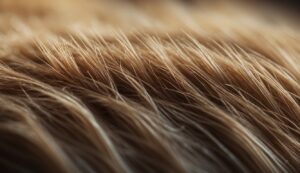
The Surprising Importance of Human Body Hair

Why Do Gorillas Beat Their Chest: Not Just a Display of Strength
- March 23, 2024
- Complete List of Animals
- Animals that start with A
- Animals that start with B
- Animals that start with C
- Animals that start with D
- Animals that start with E
- Animals that start with F
- Animals that start with G
- Animals that start with H
- Animals that start with I
- Animals that start with J
- Animals that start with K
- Animals that start with L
- Animals that start with M
- Animals that start with N
- Animals that start with O
- Animals that start with P
- Animals that start with Q
- Animals that start with R
- Animals that start with S
- Animals that start with T
- Animals that start with U
- Animals that start with V
- Animals that start with W
- Animals that start with X
- Animals that start with Y
- Animals that start with Z
- Parks and Zoos

- Diomedeidae
- Diomedea exulans
- Procellariiformes
Wandering Albatross
The Wandering Albatross is a massive bird known by many names. In various regions, people call this bird a Snowy Albatross, Goonie, and White Winged Albatross.
Not only are they the largest of the 22 albatross species, but they also have the longest wingspan of any bird. Their wings commonly measure up to 10 ft. across, and the largest confirmed specimen had a wingspan over 12 ft. across! Read on to learn about the Wandering Albatross .

Description of the Wandering Albatross
This species of albatross has white plumage, or feathers, with darker wings. Their wing feathers are black, and speckled with varying degrees of white. Young birds have brown feathers, which become white as they age.
This bird’s wingspan is quite large, and averages 10 feet across, though some individuals are larger. Finally, their beaks are moderately long, with a hook at the end to help grasp fish.
Interesting Facts About the Wandering Albatross
This species has the longest wingspan of any living bird … Ever! However, that is not the only notable thing about the Wandering Albatross.
- Monogamous Mates – Once a Wandering Albatross has found a suitable mate, it continues to breed with that bird for the rest of its life. They are doting parents, and take great care in rearing their chicks. It sometimes takes up to 10 months for the chick to learn how to fly and become independent of its parents.
- Time Constraints – Obviously when it takes 10 months to raise a single chick, it can be difficult to jump right back into parenthood. For this reason, Wandering Albatrosses breed once every 2 years.
- Slow to Mature – Adult albatrosses don’t even begin reproducing until they are about 10 years old on average. They sometimes join the other birds at the breeding colonies and perform mating displays. However, most of the time they do not find a mate and begin to breed until they are around 10 years old.
- Slow Growth – Unfortunately, because these birds are so slow to mature, and they breed at a very slow rate, their populations do not increase quickly. Because of this, when their populations decline it takes a long time for them to make a comeback. Humans pose threats to these birds in a number of different ways, and the IUCN lists the species as Vulnerable .
Habitat of the Wandering Albatross
These birds spend the vast majority their life flying over, or floating on the surface of, the ocean. They inhabit the open ocean, primarily where the waters are deep, and fish are plentiful. The only time they come to land is for the mating season. During this time, colonies of birds land on plateaus, valleys, and plains.
Distribution of the Wandering Albatross
There are several different subspecies of Wandering Albatross, all of which live in the open oceans of the Southern Hemisphere. Outside of the breeding season, they roam the open oceans in between Antarctica and the southern coasts of Africa, South America, and Australia. Their primary breeding colonies are on various islands across the Southern Hemisphere, including South Georgia, Macquarie, Amsterdam Island, and more.
Diet of the Wandering Albatross
This seabird unsurprisingly feeds primarily on fish and other aquatic organisms. They eat fish, octopus, squid, shrimp, and krill.
They also scavenge on the remains of carcasses, as well as feeding on the scraps from commercial fishing operations and other predators. Though they can dive if they need to, they catch most of their food at the surface of the water.
Wandering Albatross and Human Interaction
Unfortunately, humans are extremely detrimental to these birds. Sailors have killed birds, both at sea and in nesting colonies, for decades. In fact, humans are the only known predator of adult albatrosses.
Nowadays it is illegal to harm these birds, though killing does still occur. Sadly, they frequently, and accidentally, become trapped in fishing nets or on fishing lines. Humans have also introduced many different feral animals to their breeding islands, and these animals eat the eggs and chicks.
Domestication
Humans have not domesticated this species of bird in any way.
Does the Wandering Albatross Make a Good Pet
No, the Wandering Albatross does not make a good pet. Their huge wings carry them across open ocean, which would make them a poor household pet. It most places, it is illegal to harm, harass, capture, or kill these birds.
Wandering Albatross Care
These birds do not often find themselves in zoos. The only time any albatross species lives in a zoo or aquarium is when something has severely injured them in some way.
During those times, zoos attempt to heal and rehabilitate the birds, and release them back into the wild if possible. Albatrosses that live in zoos because they cannot survive in the wild act as ambassadors to the plight of their species.
Behavior of the Wandering Albatross
This species is quite social, even outside of the breeding season. While in the open ocean, small groups of Wandering Albatrosses forage together. These groups frequently converge upon one another when feeding opportunities, like bait balls or fishing vessels, arise.
As the breeding season arrives, huge colonies of birds flock to their breeding grounds together. Birds searching for mates perform elaborate courtship displays, and mated pairs renew their bonds.

Reproduction of the Wandering Albatross
Every 2 years a pair breeds and produces a single egg, usually in December. Both the male and the female help incubate the egg, which hatches after 2.5 months. Once the chick hatches the parents alternate between keeping it warm and fishing for food.
After the chick is a month old, both parents leave it alone to hunt for food. It takes between 9 and 10 months for the chick to learn how to fly and gain independence.
RELATED ARTICLES MORE FROM AUTHOR
![Red Angus Closeup of a beautiful Red Angus cowPhoto by: U.S. Department of Agriculture [pubic domain]https://creativecommons.org/licenses/by/2.0/](https://animals.net/wp-content/uploads/2020/03/Red-Angus-4-238x178.jpg)
Paint Horse

Expert Recommendations

Best Senior Dog Food

Best Grain Free Dog Food

Best Dog Training Treats

Best Dog Life Jacket

Best Dog Ear Cleaner

Best Cat Stain Odor Remover

Best Raw Dog Food

Best Canned Cat Food

Best Dog Beds for Large Dogs

Best Dog Seat Cover
Even more news.
![Red Angus Closeup of a beautiful Red Angus cowPhoto by: U.S. Department of Agriculture [pubic domain]https://creativecommons.org/licenses/by/2.0/](https://animals.net/wp-content/uploads/2020/03/Red-Angus-4-100x75.jpg)
House Spider
Popular category.
- Chordata 694
- Mammalia 247
- Dog Breeds 184
- Actinopterygii 121
- Reptilia 87
- Carnivora 72
- Privacy Policy
- Terms and Conditions

share this!
November 30, 2022
New research unlocks clues about the iconic flight of the wandering albatross
by Woods Hole Oceanographic Institution
![Schematic of a wandering albatross flying in an across-wind direction using an S-shaped dynamic soaring manoevre consisting of a series of upwind and downwind turns through the boundary layer (redrawn after Sachs [6]). The bird extracts mechanical energy from the wind by climbing headed upwind and descending headed downwind. Wave heights are typically large in the Southern Ocean. Wind–wave interactions cause a more complicated instantaneous wind field than the average shown here, and waves themselves induce updrafts. Albatrosses appear to efficiently exploit these fine-scale variations in wind velocity, making modeling their flight challenging. Credit: Royal Society Open Science (2022). DOI: 10.1098/rsos.211364 New research unlocks clues about the iconic flight of the wandering albatross](https://scx1.b-cdn.net/csz/news/800a/2022/new-research-unlocks-c.jpg)
Wandering albatrosses, which are an iconic sight in the Southern Ocean, are highly adapted to long-distance soaring flight. Their wingspan of up to 11 feet is the largest known of any living bird, and yet wandering albatrosses fly while hardly flapping their wings. Instead, they depend on dynamic soaring—which exploits wind shear near the ocean surface to gain energy—in addition to updrafts and turbulence.
Now researchers, including Philip Richardson, a senior scientist emeritus in Physical Oceanography Department at the Woods Hole Oceanographic Institution (WHOI), are unlocking more clues about exactly how wandering albatrosses are such amazing flyers.
In a new paper analyzing GPS tracks of wandering albatrosses, researchers have found that the birds' airspeed increases with wind speed up to a maximum airspeed of 20 meters per second (m/s; 45 mph). Researchers developed a model of dynamic soaring, which predicts that the birds could fly much faster than 20 m/s. The paper concludes that the birds limit their airspeed by adjusting the turns in their trajectories to be around 60°, and that in low winds the birds exploit updrafts over waves to supplement dynamic soaring.
"We hypothesize that wandering albatrosses limit their maximum across-wind airspeeds to ~ 20 m/s in higher wind speeds (and greater wind turbulence), probably to keep the aerodynamic force on their wings during dynamic soaring well below the mechanically-tolerable limits of wing strength," according to the paper, "Observations and Models of Across-wind Flight Speed of the Wandering Albatross," published in the journal Royal Society Open Science .
The paper adds that, given the complex field of wind waves and swell waves often present in the Southern Ocean, "it is also possible that birds find it increasingly difficult to coordinate dynamic soaring maneuvers at faster speeds."
Regarding low flight speeds by albatrosses, the paper notes that a theoretical model predicted that the minimum wind speed necessary to support dynamic soaring is greater than 3 m/s. "Despite this, tracked albatrosses were observed in flight at wind speeds as low as 2 m/s. We hypothesize at these very low wind speeds, wandering albatrosses fly by obtaining additional energy from updrafts over water waves," according to the paper.
"We tried to figure out how these birds are using the winds to go long distances—without overstressing their wings—for foraging for food and returning to feed their chicks. To do that, we modeled dynamic soaring and what different turn angles would do to stress on the birds' wings and speed over the water," said journal paper co-author Richardson. A dynamic soaring trajectory is an s-shaped maneuver consisting of a series of connected turns, he noted.
"This research is a step in the direction of understanding how wandering albatrosses are able to do these foraging trips and maintain a fairly large population. These birds figured out an amazing way to use the wind to almost effortlessly soar for thousands of miles over the ocean. We wanted to find out exactly how they did it," he said.
In addition to learning more about albatrosses, the study could have broader implications for helping researchers better understand how to use dynamic soaring to power potential albatross-type gliders to observe ocean conditions, Richardson added.
For the study, researchers used GPS to track 46 wandering albatrosses during foraging trips the birds made between February to September 2004. The birds were breeding on Bird Island, which is off the northwest tip of South Georgia in the Southern Atlantic Ocean. Wandering albatrosses lack sufficient musculature to sustain continuous flapping flight for long periods of time; however they have a shoulder lock that mechanically holds their wings outstretched so that little energy is expended while soaring, according to the paper.
Since the earliest days of scientific inquiry, the way that many birds are able soar—that is, fly without flapping their wings—has fascinated and perplexed observers, said paper co-author Ewan D. Wakefield, affiliate researcher at the University of Glasgow and postdoctoral research associate at the University of Durham, UK.
Wandering albatrosses are particularly remarkable for their ability to soar over the surface of the sea for long periods, covering vast distances, Wakefield said. He added that the physical principles explaining dynamic soaring flight were established over a century ago: Basically, albatrosses swoop up and down between layers of fast and slow moving air near the surface of the sea, gaining airspeed each time they do so.
"However, as our study shows, real-world albatross flight differs considerably from the predictions of simple physical models," Wakefield said.
"On the one hand, our GPS-tracking data show that they can and do fly in lighter winds than dynamic soaring models say should be possible. We suspect that this is because they can also fly by surfing updrafts created by the large waves that constantly surge around their Southern Ocean home. On the other hand, the upper limit of albatrosses' airspeed that we measured is much slower than physics predicts."
"We think that this is because albatrosses need to keep the forces on their wings within tolerable limits. After all, they're made from bone and muscle, not aluminum and titanium. Our study therefore points to ways in which theoretical models need to be refined to capture more faithfully the amazing complexity and beauty of albatross flight."
Richardson recalled being entranced by wandering albatrosses ever since he observed them during a 1997 oceanographic cruise in the South Atlantic Ocean. "We were steaming upwind at 15 knots, pounding into waves, and these albatrosses caught up to us from astern and were cruising around and having a grand old time," Richardson said. "I sat there for hours watching these birds in amazement, and wondering how they could fly like that. Now we are learning more about how they do it."
Journal information: Royal Society Open Science
Provided by Woods Hole Oceanographic Institution
Explore further
Feedback to editors

Research team discovers more than 50 potentially new deep-sea species in one of the most unexplored areas of the planet
6 hours ago

New study details how starving cells hijack protein transport stations

New species of ant found pottering under the Pilbara named after Voldemort
7 hours ago

Searching for new asymmetry between matter and antimatter

Where have all the right whales gone? Researchers map population density to make predictions

Exoplanets true to size: New model calculations shows impact of star's brightness and magnetic activity
8 hours ago

Decoding the language of cells: Profiling the proteins behind cellular organelle communication

A new type of seismic sensor to detect moonquakes

Macroalgae genetics study sheds light on how seaweed became multicellular
9 hours ago

Africa's iconic flamingos threatened by rising lake levels, study shows
Relevant physicsforums posts, is this egg-laying or something else, color recognition: what we see vs animals with a larger color range.
2 hours ago
How to Implement Beamforming in Ultrasound Diffraction Tomography
Apr 10, 2024
Potentially fatal dog parasite found in the Colorado River
Apr 9, 2024
What do large moles on the body indicate?
Mar 30, 2024
Avian flu - A new study led by a team from the University of Maryland
Mar 27, 2024
More from Biology and Medical
Related Stories

Researchers show that dynamic soaring isn't just for albatrosses
Jun 1, 2022

Research identifies 'danger zones' for wandering albatrosses
Nov 28, 2022

Shy male albatrosses prefer divorce to confrontation: study
Sep 18, 2022

Albatrosses from space: Wildlife detectives needed
Sep 5, 2022

Leonardo da Vinci's take on dynamic soaring
Oct 10, 2018

Study finds albatrosses fine-tuned to wind conditions
Jun 18, 2020
Recommended for you

Bonobos are more aggressive than previously thought, study shows
Iconic savanna mammals face genetic problems due to fences and roads
15 hours ago
Let us know if there is a problem with our content
Use this form if you have come across a typo, inaccuracy or would like to send an edit request for the content on this page. For general inquiries, please use our contact form . For general feedback, use the public comments section below (please adhere to guidelines ).
Please select the most appropriate category to facilitate processing of your request
Thank you for taking time to provide your feedback to the editors.
Your feedback is important to us. However, we do not guarantee individual replies due to the high volume of messages.
E-mail the story
Your email address is used only to let the recipient know who sent the email. Neither your address nor the recipient's address will be used for any other purpose. The information you enter will appear in your e-mail message and is not retained by Phys.org in any form.
Newsletter sign up
Get weekly and/or daily updates delivered to your inbox. You can unsubscribe at any time and we'll never share your details to third parties.
More information Privacy policy
Donate and enjoy an ad-free experience
We keep our content available to everyone. Consider supporting Science X's mission by getting a premium account.
E-mail newsletter

Meet the Largest Flying Bird in the World: The Wandering Albatross
Published: July 15, 2023
The animal kingdom is filled with diverse incredible creatures, each with unique characteristics and abilities. Among them, the wandering albatross stands out as one of the most fascinating birds on the planet. With a wingspan of over three meters, it proudly holds the title of the largest flying bird in the world. These majestic creatures are known for their long-distance flights over the open ocean and remarkable resilience in surviving harsh weather conditions. Get ready to be amazed by this remarkable bird’s incredible abilities and features!
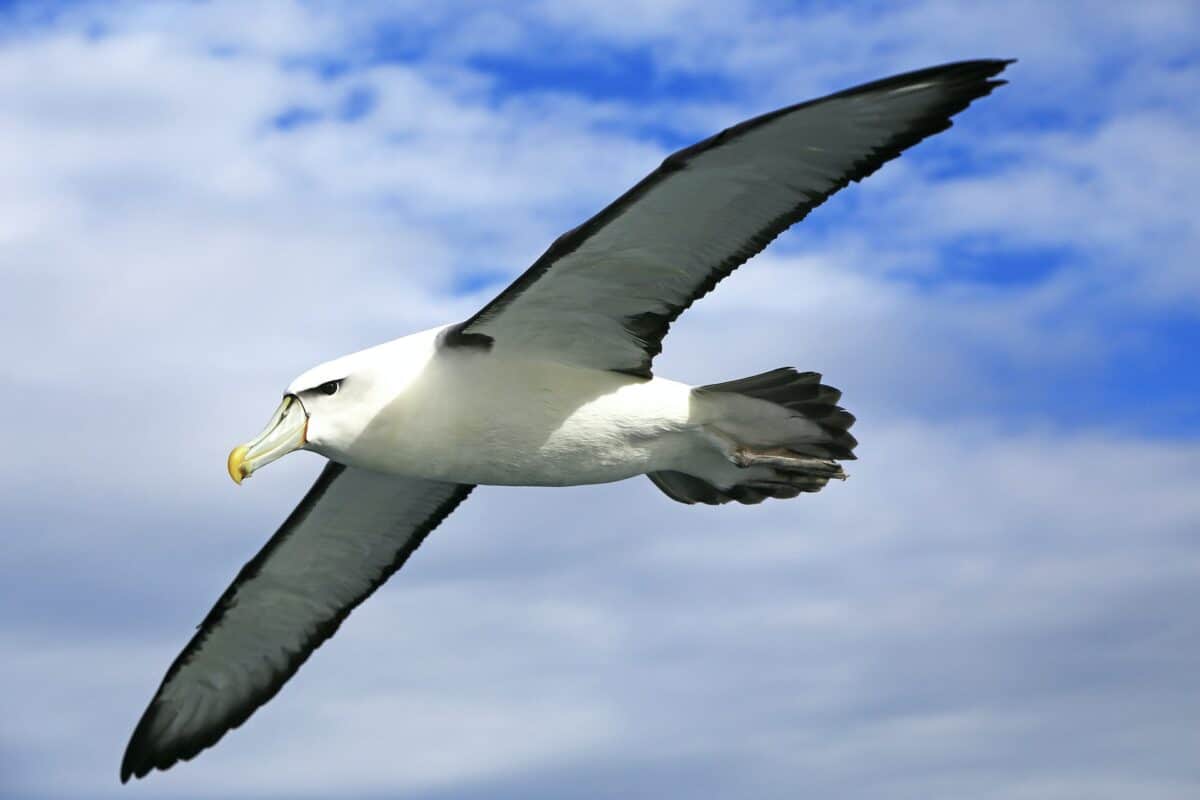
Soar to any section below!
Physical Characteristics
The wandering albatross can span over three meters, making it the largest flying bird in the world. This feature sets the wandering albatross apart from all other birds, giving it a unique and majestic appearance. As for their weight, albatrosses are relatively light despite their size, weighing in at around 7-11 kilograms.
The wandering albatross’s wingspan is a marvel of nature. Its wings are incredibly long and broad, specifically suited to gliding over long distances. Although they may look cumbersome, these wings are perfectly designed to give the bird maximum lift while minimizing drag during flight. This allows the wandering albatross to fly great distances without too much energy.

Feather Colors
The wandering albatross is mainly white, with black feathers on its back and wings. The color of its feathers gives the wandering albatross a striking appearance and serves a practical purpose. The white feathers help the bird blend with its surroundings, making it less visible to potential predators. On the other hand, the black feathers on its back help absorb heat, which is important when flying over the open ocean.
The wandering albatross’ beak is distinctive, with a hooked shape perfectly suited to its diet. These birds are primarily scavengers and will eat anything from squid to fish, with the occasional seal carcass thrown in. Their hooked beak helps them rip apart tough materials, such as fish skin, which they swallow whole.
Check out: Unearth the Reality of Georgia’s Brown Recluse Spiders .
Behavior And Lifestyle Of The Wandering Albatross

The wandering albatross is not just a remarkable bird because of its physical characteristics, it also showcases fascinating behaviors that have captivated researchers and bird enthusiasts alike. In this section, we delve into the distinct behaviors of the wandering albatross, including its breeding habits, migration patterns, hunting techniques, and socialization within flocks.
Breeding Habits
Breeding is a crucial part of the wandering albatross’s life cycle, and they typically breed on remote sub-Antarctic islands. These islands provide a haven for the birds to mate and rear their young without the threat of predators. Breeding pairs will mate for life; every breeding season, they will mate and produce a single egg that they take turns incubating. During incubation, the male and female albatrosses stay in the nest to keep the egg warm. Once the egg hatches, the parents feed the chick, regurgitating food from their stomachs to feed their young.

Migration Patterns
One of the most unusual behaviors of the wandering albatross is its long-distance migration patterns. These birds can fly thousands of kilometers over the open ocean, often without resting, for months. The albatrosses do this to find food, as their main source of nutrition is squid and fish, which they hunt in the open ocean. The wandering albatross also has a unique way of navigating their migrations. They use the Earth’s magnetic field as a guide, using their ability to sense the Earth’s magnetic field to orient themselves and navigate their journeys.
Hunting Techniques
When it comes to hunting, the wandering albatross has developed unique techniques that allow them to thrive in the harsh and challenging conditions of open ocean hunting. They use their incredible eyesight and sense of smell to locate squid and fish in the water. Once they spot their prey, they use their long, powerful wings to fly just above the water’s surface, dipping their beaks into the water to snatch up their meal.
Check out: Surviving the Realm of Tiger Snake Bites .
Socialization Within Flocks
The wandering albatross is a highly social bird, often forming large flocks when not breeding. These flocks provide safety and companionship for the birds while on their long journeys. They also perform elaborate courtship rituals within these flocks, using intricate dance moves and calls to attract potential mates.
Check out: Lost Cat’s Remarkable Cross-Country Journey Home .
Conservation Status Of The Wandering Albatross
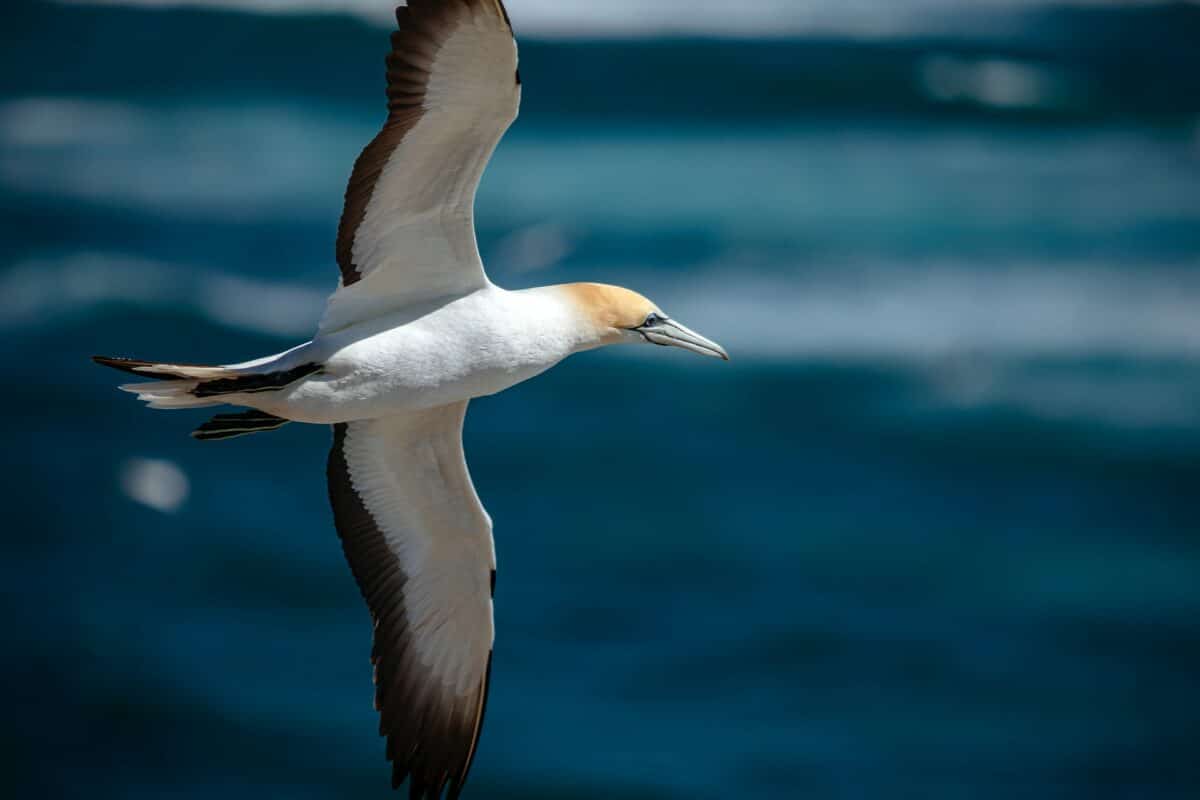
The wandering albatross is undoubtedly one of the most striking birds on the planet. Unfortunately, it is one of the most vulnerable species and is listed as “endangered” under the IUCN Red List , meaning it is at risk of extinction. The wandering albatross faces numerous threats to its population, including climate change, habitat loss, and human activities such as fishing, pollution, and plastic waste.
Threats To Wandering Albatross Population
Climate change has caused a significant impact on the wandering albatross population. Changes in water temperature and ice cover affect the bird’s food supply, which can result in lower breeding success rates. The increase in plastic waste has also led to many albatrosses suffering entanglement and ingestion of plastic debris, resulting in death. The longline fishing industry is another serious threat to their population, with these birds accidentally killed by fishing hooks and nets.
Conservation Efforts
Several conservation efforts have been implemented to combat these threats to the wandering albatross population. The Agreement on the Conservation of Albatrosses and Petrels (ACAP) is an international agreement aimed to conserve albatross and petrel species and reduce the impact of harmful fishing practices.
The ACAP framework has implemented measures such as using bird-scaring streamers and setting longline fishing at night to avoid seabirds. There are also efforts to reduce plastic pollution through cleanup projects and recycling campaigns.
Success Stories
Despite the threats, there are some success stories. For example, in Macquarie Island, a designated United Nations Educational, Scientific, and Cultural Organization ( UNESCO ) World Heritage Site, the wandering albatross population is thriving due to strict conservation measures, including removing introduced animals such as rats and rabbits, which prey on the bird’s eggs and chicks.
Further efforts have led to the reduction of bird deaths due to fishing hooks. In South Africa, using small circle hooks has reduced the number of albatrosses caught in fishing gear by over 90%. These hooks do not harm the birds and can be easily removed if caught.
The wingspan of a Wandering Albatross can reach up to 11 feet, the largest of any bird in the world.
Wandering Albatross mainly feeds on fish and squid and can travel up to 600 miles daily to find food.
Wandering Albatross can live for up to 50 years and are known for their lifelong monogamous breeding pairs and unique courtship rituals.

The wandering albatross is an extraordinary bird that continues to capture the hearts and minds of scientists, birdwatchers, and nature enthusiasts worldwide. Its remarkable wingspan, ability to fly long distances over the open ocean, and resilience in harsh weather conditions are just a few qualities that set this bird apart from its peers. It’s no wonder that the wandering albatross is the world’s largest flying bird. With all its fantastic abilities and characteristics, it’s an animal kingdom marvel that deserves all the admiration and respect it gets.
Thanks for reading along! See below for related article links.
- Great White Shark Vs. Bull Shark
- The World’s Largest Land Predator: The Polar Bear
- Gorilla Vs. African Forest Buffalo
- Unveiling The Longest Snake In the World
- Discover Pennsylvania’s Hidden Threat: The Timber Rattlesnake
- Latest Posts
- Watch: Why You Should Never Approach A Bison in Yellowstone National Park (Video) - April 8, 2024
- Watch: Python Swallows A Full-Grown Crocodile - April 8, 2024
- Watch: Magpie Helps Hedgehog Cross The Street - April 8, 2024

- Entertainment
Subscribe to Updates
Get the latest creative news from FooBar about art, design and business.
By signing up, you agree to the our terms and our Privacy Policy agreement.
Effective Strategies for Chronic Back Pain Management
Understanding the role of online valuation tools in property sales, the italian-american family tree: tracing generations and connecting family stories.

Soaring High: Exploring the Bird with the Longest Wingspan
Birds, with their diverse shapes and sizes, captivate us with their ability to take flight. Among these avian wonders, one particular feature stands out—the wingspan. Wingspan not only defines a bird’s aerial prowess but also plays a crucial role in its ecological niche and hunting strategies.
In this comprehensive guide, we’ll spread our wings of curiosity and delve into the world of the bird with the longest wingspan, exploring its unique characteristics, its place in the avian kingdom, and the awe-inspiring spectacle of witnessing such a majestic creature take to the skies.
The Grandeur of Wingspans: An Avian Overview

Before we embark on our exploration of the bird with the longest wingspan, let’s take a moment to appreciate the significance of wingspans in the avian realm. A bird’s wingspan is the measurement from the tip of one wing to the tip of the opposite wing when fully outstretched. It’s a fundamental aspect of avian anatomy, influencing flight capabilities, foraging strategies, and migration patterns.
Wingspan Categories: From Sparrows to Albatrosses
Wingspans across bird species vary dramatically. Small songbirds, like sparrows and finches, boast wingspans of a few inches, allowing for agile and nimble flight through dense vegetation. On the other end of the spectrum, large seabirds and raptors, such as eagles and vultures, exhibit wingspans that can span several feet, aiding them in soaring effortlessly across vast distances.
The Longest Wingspan: Albatross Takes the Crown
The Albatross: An Oceanic Giant
When it comes to the bird with the longest wingspan, the undisputed champion is the albatross. These magnificent seabirds, known for their exceptional flying abilities and transoceanic journeys, showcase wingspans that leave other birds in the shadows. Among the various species of albatross, the Wandering Albatross (Diomedea exulans) claims the title for the longest wingspan.
Record-Breaking Dimensions
The Wandering Albatross holds the record for the longest wingspan of any living bird, with measurements reaching up to an astonishing 11 feet (3.4 meters). To put this into perspective, imagine a wingspan that exceeds the height of an average human adult. This remarkable adaptation enables the Wandering Albatross to cover immense distances over the open ocean with unparalleled efficiency.
The Anatomy of Soaring: How Long Wingspans Benefit Albatrosses
The impressive wingspan of the Wandering Albatross serves several crucial purposes in its oceanic lifestyle. These include:
- Efficient Gliding: The long wings allow albatrosses to effortlessly glide for hours without flapping, conserving energy during their extended foraging trips.
- Dynamic Soaring: Albatrosses are adept at utilizing wind currents over the open ocean. Their long wings enable dynamic soaring, a technique where they gain energy from the contrast between wind speeds at different altitudes.
FAQ: Navigating the Skies of Curiosity
Are albatrosses found everywhere in the world?
Albatrosses are predominantly found in the Southern Hemisphere, with some species venturing into the Northern Hemisphere during certain seasons. Their vast oceanic ranges make them true masters of long-distance travel.
How do albatrosses sleep during their long flights?
Albatrosses have the ability to sleep while flying. They can lock their wings in a fixed position and use the wind to maintain their flight trajectory, allowing them to rest during their epic journeys.
Do all albatross species have such long wingspans?
While the Wandering Albatross boasts the longest wingspan, other albatross species also exhibit impressive wingspans, typically ranging from 6 to 11 feet. Each species’ wingspan is adapted to its specific ecological niche and foraging behaviors.
How long do albatrosses live?
Albatrosses are known for their longevity, with some species living for several decades. The Wandering Albatross, in particular, can have a lifespan of up to 60 years.
Are albatross populations facing challenges?
Unfortunately, albatross populations face threats, primarily from human activities. Issues such as longline fishing, plastic pollution, and climate change impact their habitats and food sources, highlighting the need for conservation efforts.
- How to Remove Bird Poop Stains
- Types of Bird Wings
Awe-Inspiring Spectacle: Witnessing the Albatross in Flight
As we conclude our journey into the world of the bird with the longest wingspan, we find ourselves in awe of the remarkable adaptations that enable albatrosses to navigate the vast expanses of the open ocean. The Wandering Albatross, with its wings outstretched in majestic flight, embodies the beauty and grace of avian evolution.
Whether you’re a seasoned birdwatcher or someone taking their first steps into the world of ornithology, the sight of an albatross in flight is a testament to the wonders of the natural world. So, the next time you find yourself gazing at the skies, imagine the silent dance of these oceanic giants, soaring above the waves with wings that span the dimensions of dreams—a living testament to the boundless possibilities of flight in the avian kingdom.
I'm Bella K. Swan, and I'm absolutely delighted to welcome you to the vibrant avian world here at Birdswave.com. I'll share my experience about blogging for news, business and many more.
Related Posts
What is online money game instructions on how to play properly for beginners, unraveling the collective identity of turkeys: exploring the terminology for groups of these fascinating birds, the melodic mystery: exploring the reasons behind pigeons’ cooing, leave a reply cancel reply.
Save my name, email, and website in this browser for the next time I comment.
Type above and press Enter to search. Press Esc to cancel.

Birds with the largest wingspan include the Albatross
Birds with the largest wingspan, such as the Albatross, possess unique traits and powerful wings that enable them to soar across great distances. Some notable examples include the Northern Royal Albatross, Andean Condor, Dalmatian Pelican, and Great White Pelican, to name a few. However, it is the Wandering Albatross that claims the title for the largest wingspan, measuring over three meters. The wingspan of these majestic birds is determined by measuring from one feather tip to the other wingtip. It is widely believed that longer wingspans are associated with more extensive flight distances. The Wandering Albatross, known for its diet of crustaceans, cephalopods, and small fish, is capable of living for over five decades. Interestingly, these birds have a significantly lower divorce rate than most species, as they mate for life. Despite the vast knowledge we have about these incredible creatures, there are still many unknowns surrounding the factors that contribute to the extinction of certain bird species.
Birds with the Largest Wingspan
Birds with the largest wingspan are an awe-inspiring sight. Their expansive wings allow them to soar through the sky with grace and ease. Some of the birds with the largest wingspans include the Albatross, Northern Royal Albatross, Andean Condor, Antipodean Albatross, Tristan Albatross, Dalmatian Pelican, Southern Royal Albatross, Great White Pelican, and Wandering Albatross.
The Wandering Albatross
One of the birds with the largest wingspans is the Wandering Albatross. This magnificent creature boasts a wingspan of over three meters, making it one of the largest wingspans of any bird. Its wings are perfectly adapted to help it traverse the vast oceans it calls home.
Feeding Habits
The Wandering Albatross primarily feeds on crustaceans, cephalopods, and small fish. Its large wingspan allows it to cover a great distance while searching for food, minimizing the effort required to find sustenance. This efficient feeding strategy is crucial for the survival of such a majestic bird.
Long Lifespan
One of the remarkable things about the Wandering Albatross is its long lifespan. These birds can live for over 50 years, which is quite impressive considering their harsh oceanic environment. Their ability to navigate the vast open waters for decades is a testament to their incredible adaptability and resilience.
Mating Behavior
The Wandering Albatross has a unique mating behavior that sets it apart from many other bird species. These birds have a low divorce rate and tend to mate for life. Once they find a suitable partner, they remain together and raise their young as a committed couple. This lifelong bond is a testament to the strength and dedication of these magnificent birds.

Birds’ Wingspan
To understand the significance of birds with large wingspans, it is important to understand the concept of wingspan itself. Wingspan refers to the distance from one feather tip to the other wingtip when the wings are fully extended. It is a crucial measurement in understanding a bird’s ability to fly and navigate its environment.
Measurement Method
Measuring the wingspan of birds is a fairly straightforward process. Scientists carefully spread out the bird’s wings and measure the distance from one tip to the other. This measurement provides valuable insights into the bird’s physical capabilities and its suitability for long-distance flight.
Correlation with Flight Distances
There is a direct correlation between a bird’s wingspan and its flight distances. Birds with longer wingspans have the advantage of being able to cover greater distances with each flap of their wings. This allows them to conserve energy and travel more efficiently, making them well-suited for long migratory journeys.
Traits and Abilities of Birds with Large Wingspans
Birds with large wingspans possess a unique set of traits and abilities that enable them to excel in their environments. These characteristics contribute to their exceptional flying capabilities and overall success as a species.
Unique Traits
One of the most notable traits of birds with large wingspans is their exceptional buoyancy in flight. Their wings are designed to generate lift and provide stability even in the face of strong winds and turbulent conditions. This unique trait allows them to soar effortlessly through the skies, covering vast distances without expending excessive energy.
Strong Wings
The wings of birds with large wingspans are incredibly strong and sturdy. This strength is necessary to support their immense weight and maintain stability during long flights. Strong wings also enable these birds to maneuver through challenging weather conditions and navigate their surroundings with precision.
Long-Distance Flying Ability
Perhaps the most impressive ability of birds with large wingspans is their capacity for long-distance flight. These birds are well-suited for traversing expansive territories and crossing vast bodies of water. Their wingspans provide the necessary lift and power to sustain flight over extended periods, allowing them to migrate across continents and oceans in search of food, breeding grounds, and suitable habitats.

The Albatross Species
The Albatross family includes several species with large wingspans. Each species possesses its own unique characteristics and adaptations, making them fascinating subjects of study and admiration.
Northern Royal Albatross
The Northern Royal Albatross is one of the largest bird species in the world, with a wingspan that can reach up to three and a half meters. These magnificent birds are native to the Southern Ocean and are known for their majestic flight and graceful presence.
Antipodean Albatross
The Antipodean Albatross is another member of the Albatross family with an impressive wingspan. These birds are found in the southern oceans and can reach wingspans of over three meters. They are known for their distinctive white plumage and striking appearance.
Tristan Albatross
The Tristan Albatross is a critically endangered species with a modest wingspan of around 2.5 meters. These birds are endemic to the Tristan da Cunha archipelago in the South Atlantic Ocean. They face numerous threats to their survival, including habitat destruction and invasive species.
Southern Royal Albatross
The Southern Royal Albatross is one of the largest species of albatrosses, with a wingspan that can exceed three meters. These birds are native to the Southern Ocean and are renowned for their elaborate courtship rituals and intricate mating dances.
Wandering Albatross
As mentioned earlier, the Wandering Albatross is the albatross species with the largest wingspan. These birds are known for their exceptional ability to cover vast distances and their unique mating behavior. With their majestic wing span of over three meters, the Wandering Albatross commands attention wherever it goes.
The Andean Condor
While not an albatross, the Andean Condor deserves mention when discussing birds with large wingspans. This magnificent species has a wingspan that can exceed three meters, making it one of the largest flighted bird species. Found in the Andes Mountains of South America, these birds are known for their soaring flight and scavenging habits.

The Dalmatian Pelican
Another bird species with a noteworthy wingspan is the Dalmatian Pelican. With a wingspan that can reach up to three meters, these birds are among the largest freshwater birds in the world. They are native to parts of Europe and Asia, where they inhabit lakes, deltas, and wetlands.
The Great White Pelican
The Great White Pelican is a bird species that also boasts an impressive wingspan. These birds can reach wingspans of over three meters, making them formidable creatures in the avian world. They are known for their striking appearance, with bright white plumage and a distinctive pink facial pouch.
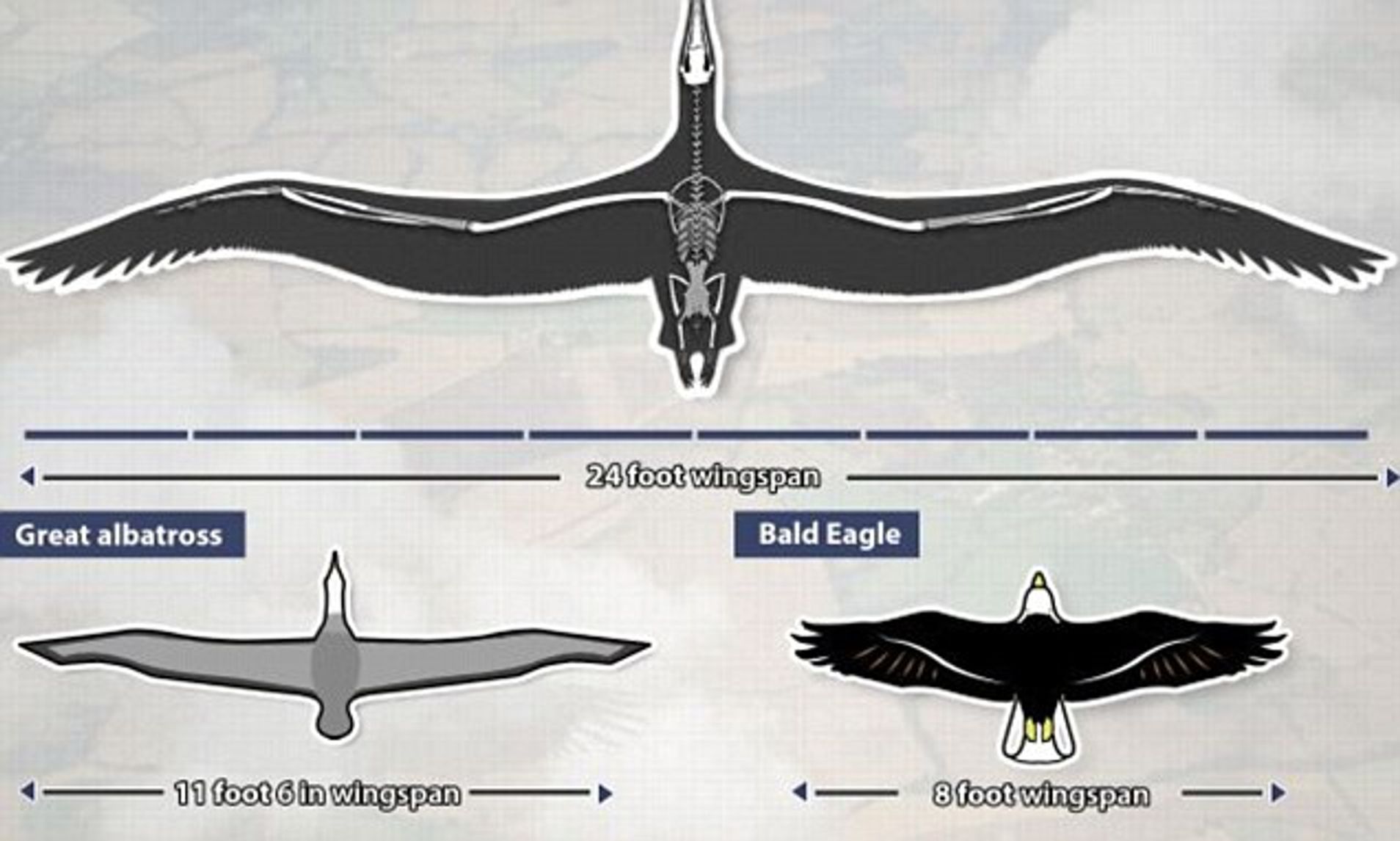
Unknowns about Extinction
While birds with large wingspans continue to capture our imaginations, there are still many unknowns about why some bird species have become extinct. Human activities, habitat loss, climate change, and other factors have significantly impacted bird populations worldwide. Understanding these complexities is crucial for the conservation and protection of our feathered friends and their unique wingspans.
In conclusion, birds with large wingspans are truly remarkable creatures. Whether it’s the graceful flight of the albatross or the majestic presence of the pelicans, these birds captivate us with their beauty and abilities. Their large wingspans enable them to soar through the skies with ease, covering vast distances and thriving in their respective habitats. As we continue to explore and learn about these magnificent creatures, it is our responsibility to protect and preserve their environments, ensuring that their impressive wingspans will grace our skies for generations to come.
Nature Blog Network
NatureBlogNetwork.com is the leading birding research and information website. Serving the birding community since 2010.
Recent Posts
White Bird Identification Guide for British Columbia
Looking to identify white birds in British Columbia? This comprehensive guide provides info on 17 species, habitats, and migration patterns. Enhance your birdwatching skills and deepen your...
Scrub-Jays: The Crow Family's Colorful Members
Discover the vibrant world of Scrub-Jays: the colorful members of the crow family. Explore their physical characteristics, behavior, diet, and more!

Wingspan Of Albatross: How Big Are They Compared To Others?

I was flabbergasted when I read about the wandering albatross wingspan. I never imagined that there were birds this big.
And this generated a curiosity inside me wanting to know more about other albatrosses’ wingspan.
And after going through a rabbit hole journey about albatrosses. I brought you this article about their wingspan.
I’ve covered all the albatrosses and their wingspan and also compared them with others.
So without further ado, let’s get into it.
Wandering Albatross Wingspan
The wandering albatross is one of the two biggest species of the genus Diomedea (the great albatrosses), comparable in size to the southern royal albatross.
The wandering albatross is the world’s biggest flying seabird and is one of 23 albatross species.
Wandering Albatrosses are excellent gliders, able to soar across the sky for several hours without beating their wings.
Wandering Albatrosses may reach speeds of up to 40 km/h. They are so efficient at flying that they can consume less energy in the air than they would in a nest.
These feathered giant Wandering Albatross have the largest wingspan of all birds, their wingspan is about 2.51 to 3.5 m (8 ft 3 in to 11 ft 6 in). The average wingspan of the Wandering Albatross is about 3.1 m (10 ft 2 in).
Albatrosses are masters of soaring flight, able to glide over huge expanses of the ocean without beating their wings. They can fly so high and so easily because of their huge wingspan.
Laysan Albatross Wingspan
The Laysan albatross, also known as Phoebastria immutabilis, is a big seabird that lives in the North Pacific.
This species of white-headed bird has dark gray-brown upper wings and predominantly white underwings and is the world’s oldest known wild bird. Being a huge seabird, it has long and broad wings.
The Laysan Albatross is a magnificent flier, capable of gliding over the wide ocean for hours on end without making a single flap of its broad wings.
Also, the wings of the Albatrosses are very powerful and adapted to face the high winds through the oceans and seas.
Laysan Albatrosses have a wingspan of about 195 to 203 cm (77–80 in) which makes them skilled fliers who are capable of flying long distances and through the most violent storms.
Although the Laysan Albatross does not have as large a wingspan as the Wandering Albatross, it still has a long and powerful wingspan of about 6 feet.
Southern Royal Albatross Wingspan
The Southern Royal Albatross is a huge albatross in the Diomedeidae family. The Royal Southern Albatross is a massive albatross of the Southern Ocean that nests in New Zealand but travels across the world.
Adult Southern Royal Albatrosses have white forewings, whereas immatures have black upper wings.
In flight, the Southern Royal Albatross is an elegant bird with a huge wingspan. It can travel great distances mostly by gliding and sailing.
In terms of wingspan, Southern Royal Albatrosses are very similar to Wandering Albatrosses. The Royal Southern Albatross bird has a vast wingspan of more than 3 m. (9.8 ft). But on average their wingspan range from 2.9 to 3.28 m (9.5 to 10.8 ft).
The Royal Albatross has one of the largest wingspans, a little bit smaller than the Wandering Albatross.
Black-footed Albatross Wingspan
The black-footed albatross, Phoebastria nigripes, is a big seabird of the albatross family Diomedeidae from the North Pacific.
The black-footed albatross is the smallest of the three northern hemisphere albatross species, the others being the Laysan albatross and the short-tailed albatross.
The Black-footed Albatross is an adept glider, capable of riding oceanic air currents for hours and across large distances.
Also, like other Albatrosses, these have a characteristic flying style known as dynamic soaring. Except in extremely weak breezes, they hardly flap their wings.
The bird has a vast wingspan of roughly 190 to 220 cm (6.2–7.2 ft).
Short-tailed Albatross Wingspan
The short-tailed albatross, sometimes known as Steller’s albatross, is a huge, uncommon seabird found in the North Pacific. These albatrosses are ocean birds that spend most of their time gliding across the open sea.
The Short-tailed albatross is the biggest of three species of albatross found in the North Pacific Ocean, characterized by its wide wingspan.
The short-tailed albatross is one of the most amazing gliders of all birds, able to fly aloft in stormy conditions for hours without ever moving its wings.
Short-tailed albatrosses may fly for up to five years without landing. Their wingspan ranges from 215 to 230 cm (6.2–7.2 ft).
Black-Browed Albatross Win
The black-browed albatross, Thalassarche melanophris, is a big seabird in the albatross family Diomedeidae.
Black-browed Albatrosses, on the other hand, are opportunistic feeders, consuming nearly anything they can get their hands on.
These Black-Browed Albatrosses fly high in the sky using their grey, white, and black wings. Because of their big and lengthy wings, the flying heart rate of a Black-browed albatross is nearly the same as when it is resting.
Their large wingspan helps them to fly for long periods of time without tiring and they scarcely need to flap their wings at all. Their wingspan ranges from 200 to 240 cm (79-94 in), about 7-8 feet.
Due to its enormous wingspan, Black-browed Albatrosses may achieve speeds of up to 110 kilometers per hour depending on wind currents.
Sooty Albatross Wingspan
Sooty albatrosses forage predominantly over deep oceanic waters, but also on continental slopes and undersea rises south of Australia.
The Sooty Albatross is a gorgeous smoky-brown albatross with vivid white eye crescents and an orange stripe going down the beak.
It is also a small to medium-sized, sooty-brown albatross with a diamond-shaped tail. Sooty and light-mantled sooty albatrosses also excel in their remarkably coordinated pair display flying off their colonies, often adjusting flight angles in tandem.
The Sooty Albatrosses have small to medium-sized wingspan with a length of about 2 m (6.6 ft).
Antipodean Albatross Wingspan
The Antipodean albatross (Diomedea antipodensis) is a huge albatross that is smaller than the largest wandering albatross. The majority of birds breed on Antipodes Island, with a few pairs on Campbell Island.
The wings and tail of the antipodean albatross are essential for flying. Its underwings are white as well, but with a black tip. Males are whiter than females, and their plumage varies according to gender.
The Antipodean Albatross, like other giant albatrosses, flies low-energy, making use of minor updrafts generated by wind and waves. It seldom flaps its wings and may glide for great distances while looking for food. It has a wingspan of 3 meters (9.84 ft).
Northern Royal Albatross Wingspan
Diomedea sanfordi, often known as the northern royal albatross or toroa, is a huge seabird in the albatross family.
It was recently separated from the closely related southern royal albatross. The Northern royal albatross is an elegant behemoth and one of the world’s biggest seabirds.
The Northern Royal Albatross has solid black upper wings, as opposed to the Southern Royal Albatross, which has white wings. This is a huge and well-known ocean wanderer that travels long distances from its breeding sites to eat.
These Albatrosses have a wingspan ranging from 270 to 305 cm (106-120 in), or up to 11 feet.
Tristan Albatross Wingspan
The Tristan albatross (Diomedea dabbenena) is a big seabird in the albatross family and one of the genus Diomedea’s great albatrosses.
The Tristan Albatross resembles the Wandering Albatross in appearance, although it is smaller and has a darker back. In addition, the Tristan Albatross is the third most endangered albatross species.
It has the largest known wingspan of any living bird and is also one of the most widespread. The sea bird’s wingspan is around 300 cm (3.05 m) (10.0 ft).
And that was everything you need to know about the wingspan of albatrosses. I hope this article was informative enough and you got something useful from it.
Thank You For Reading!
Related Articles You May Like
- Philippine Eagle Wingspan Explained
- Crow Size Explained & Compared
- Frigatebird Size Explained
- Size Of Eagle Explained
Comments are closed.
Type above and press Enter to search. Press Esc to cancel.

Live Science
9 of the biggest birds on Earth
Posted: January 13, 2024 | Last updated: January 13, 2024
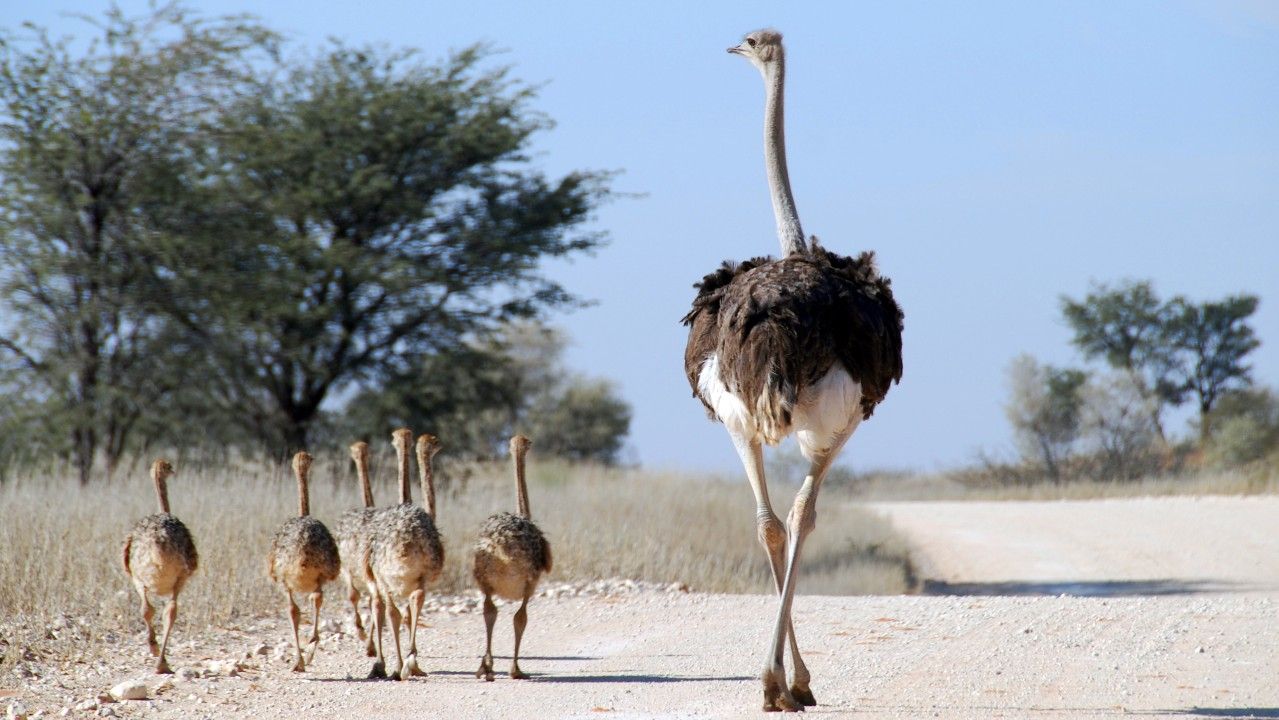
Discover what life is like for some of the biggest birds to roam the planet
Some of the biggest birds on Earth can stand taller than any NBA player and spread their wings wider than a king size bed.
There are almost 10,000 species of birds on Earth and they come in all different shapes and sizes — from the tiny bee hummingbird to the massive ostrich. Here are the biggest birds to inhabit our planet, including the tallest, heaviest and those whose wings spread the furthest.
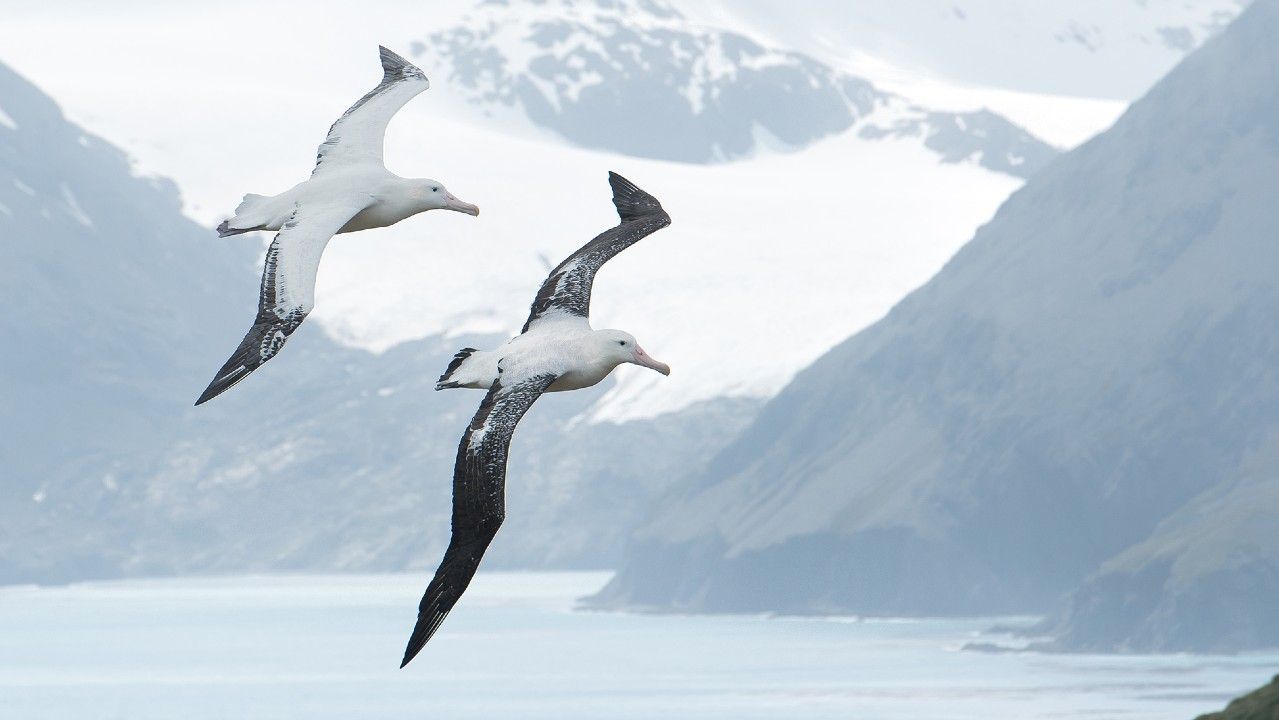
WANDERING ALBATROSS (DIOMEDEA EXULANS)
Meet the biggest bird in the world, at least in terms of its wingspan. These sea birds glide over the ocean with a wingspan of up to almost 11 feet (3.35 meters), according to the International Union for the Conservation of Nature (IUCN). Wings of this size mean that these albatross can spend large amounts of time in the sky — for example — one bird was recorded to have wandered around 3,700 miles (6,000 kilometres) in only 12 days.
There are 23 species of albatross, however all but one are either threatened or endangered or vulnerable to extinction. This is due to the birds getting caught in fishing hooks while scavenging fish and squid bait from fishing vessels and trawlers.
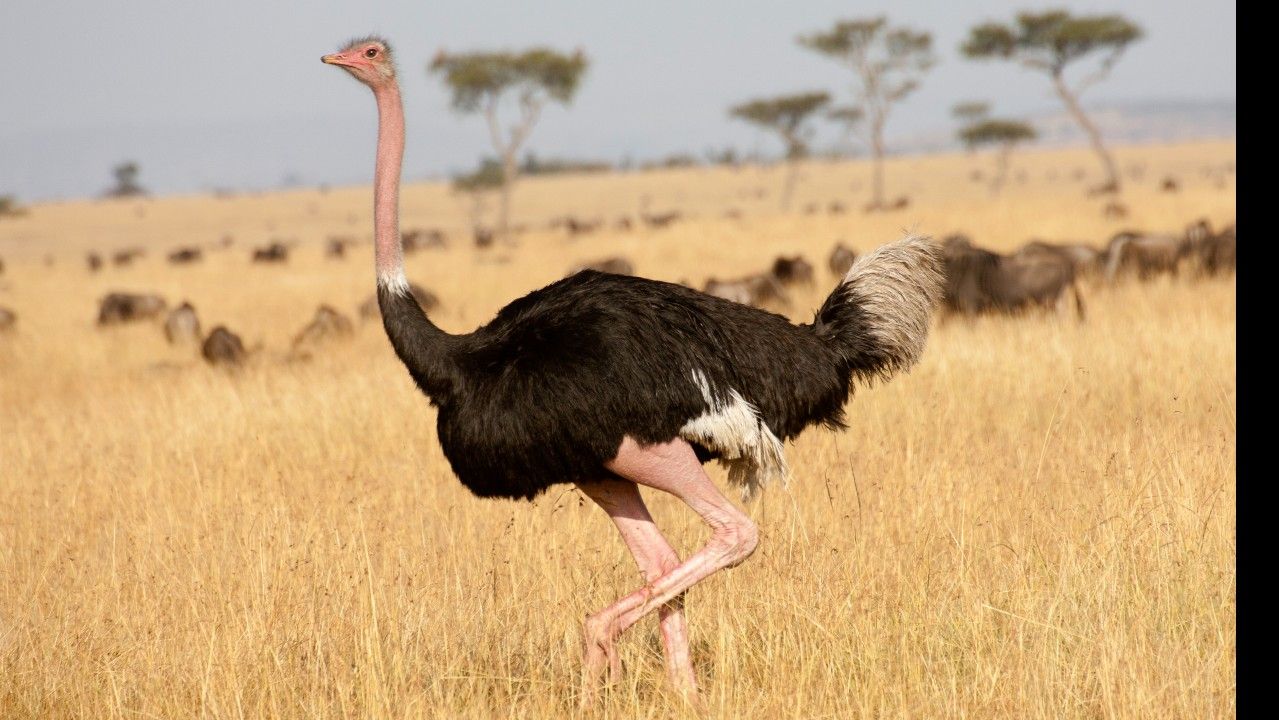
OSTRICH (STRUTHIO CAMELUS)
The biggest of all the birds on Earth, both in size and weight, is undoubtedly the ostrich. These behemoth birds grow up to 9 feet (2.7 meters) tall and can weigh up to 287 pounds (130 kilograms), according to San Diego Zoo Wildlife Alliance. Despite having a wingspan of up to 7 feet (2 meters), ostriches are unable to fly. Instead they use their wings in a similar way to how a ship uses its sails.
During a fierce 43 mile per hour run, these birds open out their wings and use them as air-rudders for rapid braking and steering. This agility enables them to escape some of the many threats they face on the African savanna, including predatory species such as lions and jackals. In some situations, ostriches will go on the offensive and use their powerful clawed feet to deliver a blow strong enough to kill a lion, according to PBS Nature.
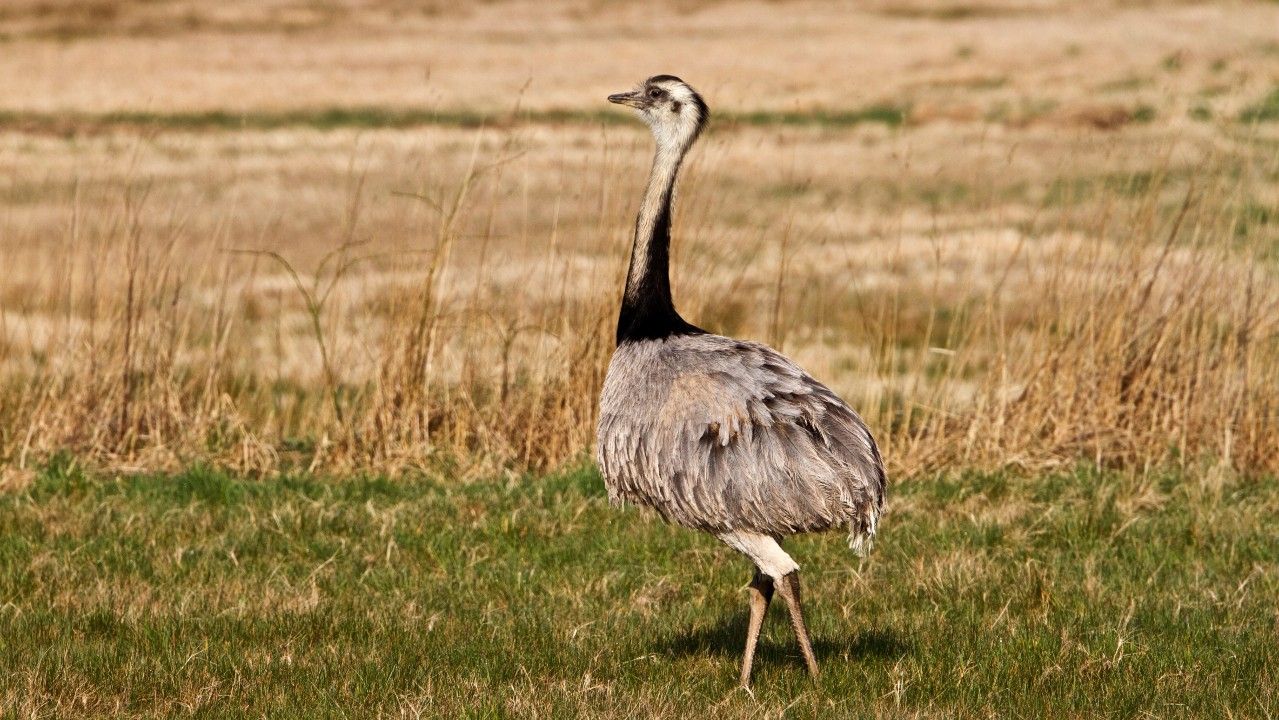
GREATER RHEA (RHEA AMERICANA)
Although these birds might look like a juvenile ostrich, rhea are in fact their South American cousins. At only around one fifth of the size of an adult ostrich, rhea can still weigh an impressive 66 pounds (30 kilograms) and grow up to 5 feet tall (1.5 meters), according to the Smithsonian’s National Zoo & Conservation Biology Institute. Rhea are flightless birds and, like ostriches, use their wings as balance aids while running at high speeds of up to 40 miles per hour, according to the Houston Zoo. Female rhea lay up to 40 eggs per breeding season, but it is the males of the species that will incubate the eggs for around 30 days before they hatch.
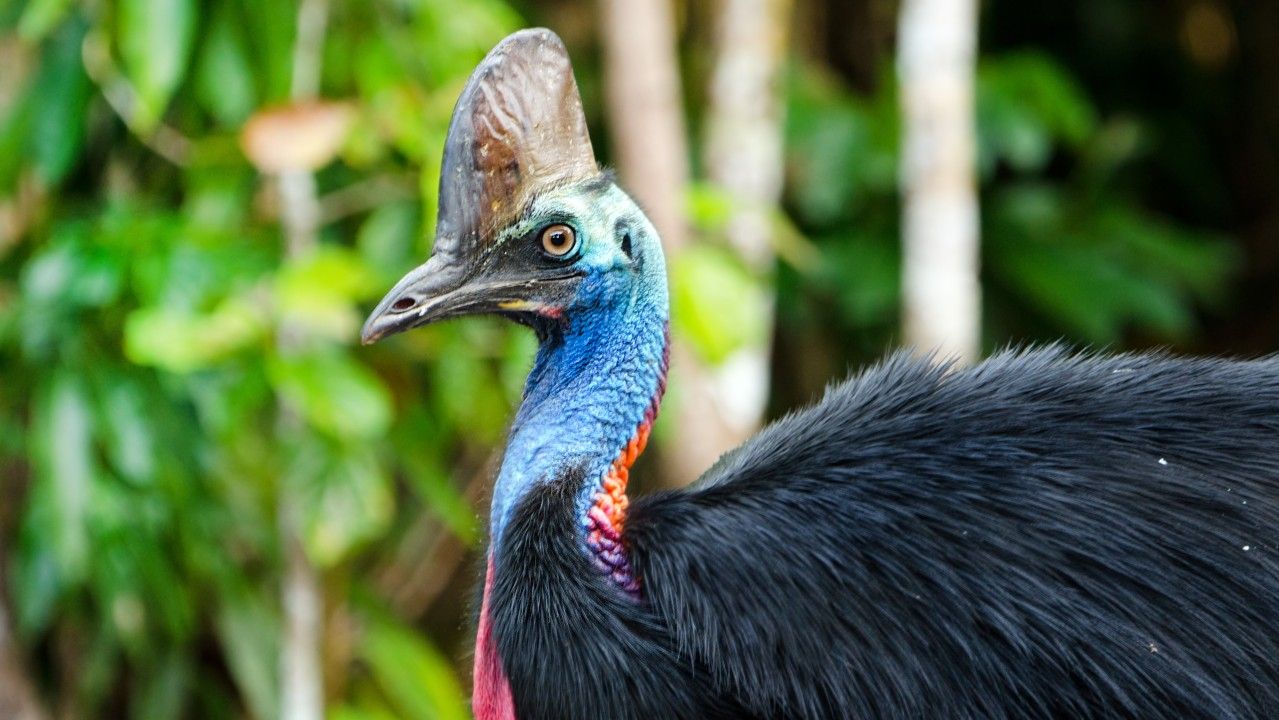
CASSOWARY (CASUARIUS CASUARIUS)
The southern cassowary is one of the most prehistoric-looking birds to prowl through New Guinea and mainland Australia. Towering up to 6 feet (2 meters) tall, cassowary's are one of the tallest birds on Earth, according to the Australian Museum. Topping off their height is a prominent helmet called a casque which is made of a thick layer of keratin — the same material that makes up your nails and hair. Cassowaries use these helmets to push past vegetation as they run through the forest, according to the Edinburgh Zoo. As well as being one of the biggest bird species, they have also gained the reputation of being one of the most dangerous. As one of the few birds recorded to have killed humans, cassowary uses their sharp 3-toed feet — which sports a middle 4 inch (10 centimeter) long toe — to deliver a fatal swipe to its target, according to Scientific American.
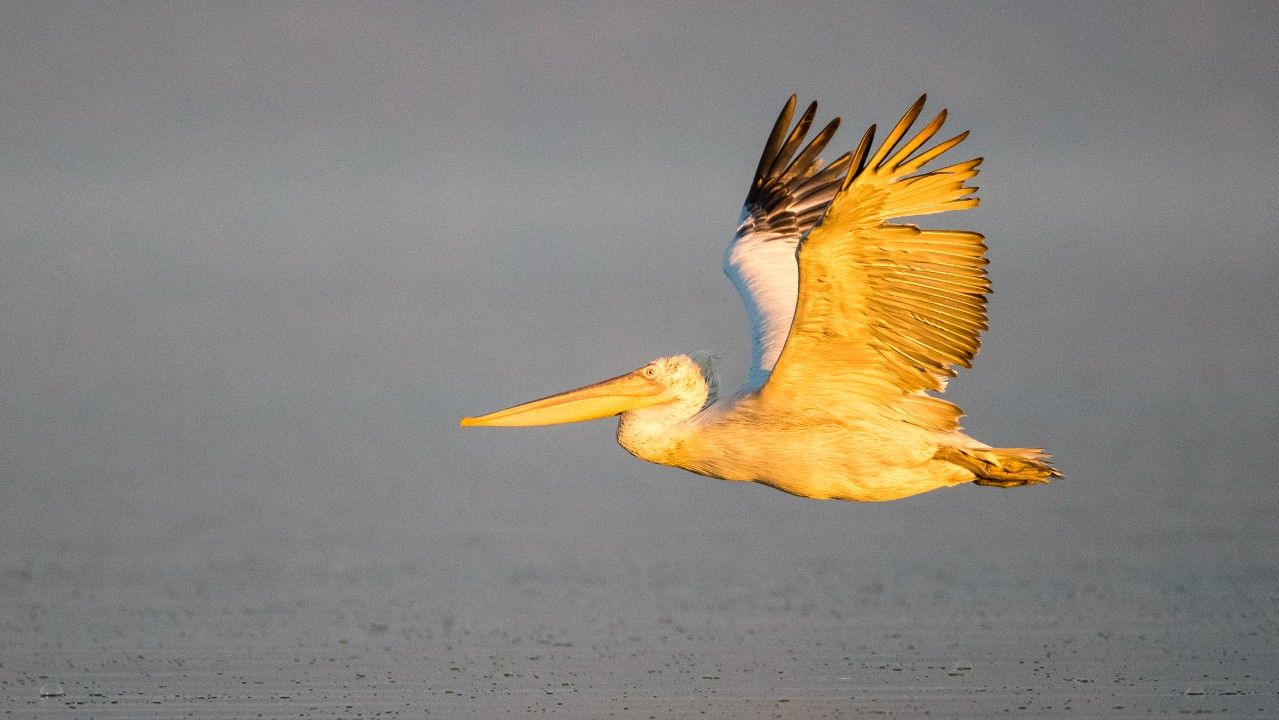
DALMATIAN PELICAN (PELECANUS CRISPUS)
The Dalmatian pelican is not only the largest species of pelican but is one of the biggest flying birds in the world. With a wingspan of around 11 feet (3 meters), these pelicans are high flyers and have been observed to reach altitudes of more than 10,000 feet (3,000 meters), according to the Arizona Center for Nature Conservation.
Along with a big pair of wings, Dalmatian pelicans also have a big appetite. An adult pelican can devour around 4 pounds (1.8 kilograms) of fish in a single day, according to San Diego Zoo Wildlife Alliance. Dalmatian pelicans gather this amount of fish by using their enormous bill pouches to dive into the water and scoop out fish near the surface. Once the fish are trapped inside their bills, the pelicans will lean their heads forwards to strain out the water and devour their meal.
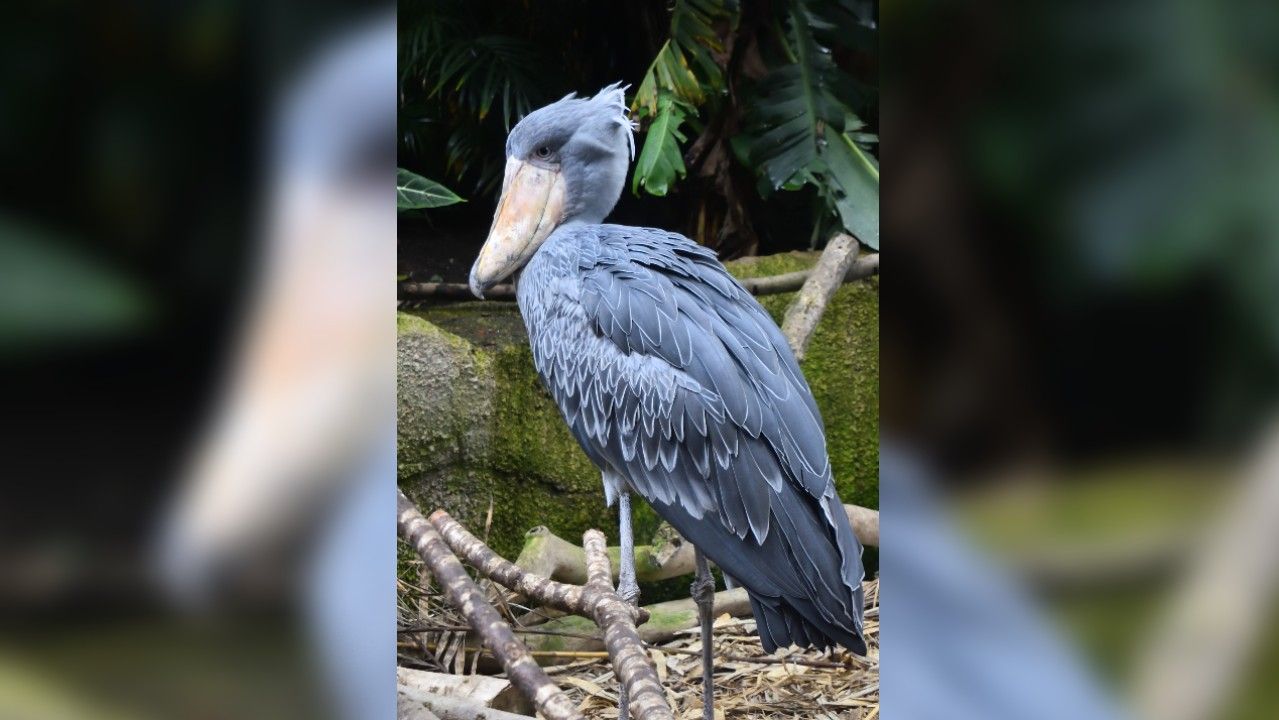
SHOEBILL (BALAENICEPS REX)
Also known as whale-headed storks, shoebills are one of Africa’s strangest and tallest birds. These strange storks stand at around 5 feet (1.5 meters) tall and spend their time wading amongst freshwater swamps and marshes hunting fish and other small aquatic species, according to the Animal Diversity Web. As hunters, shoebills have a high success rate and deliver a fatal strike into the water around 60% of the time, according to the charity BirdLife International. These solitary birds are not found in flocks and often occupy a territory of around 1 square mile (3 square kilometers).
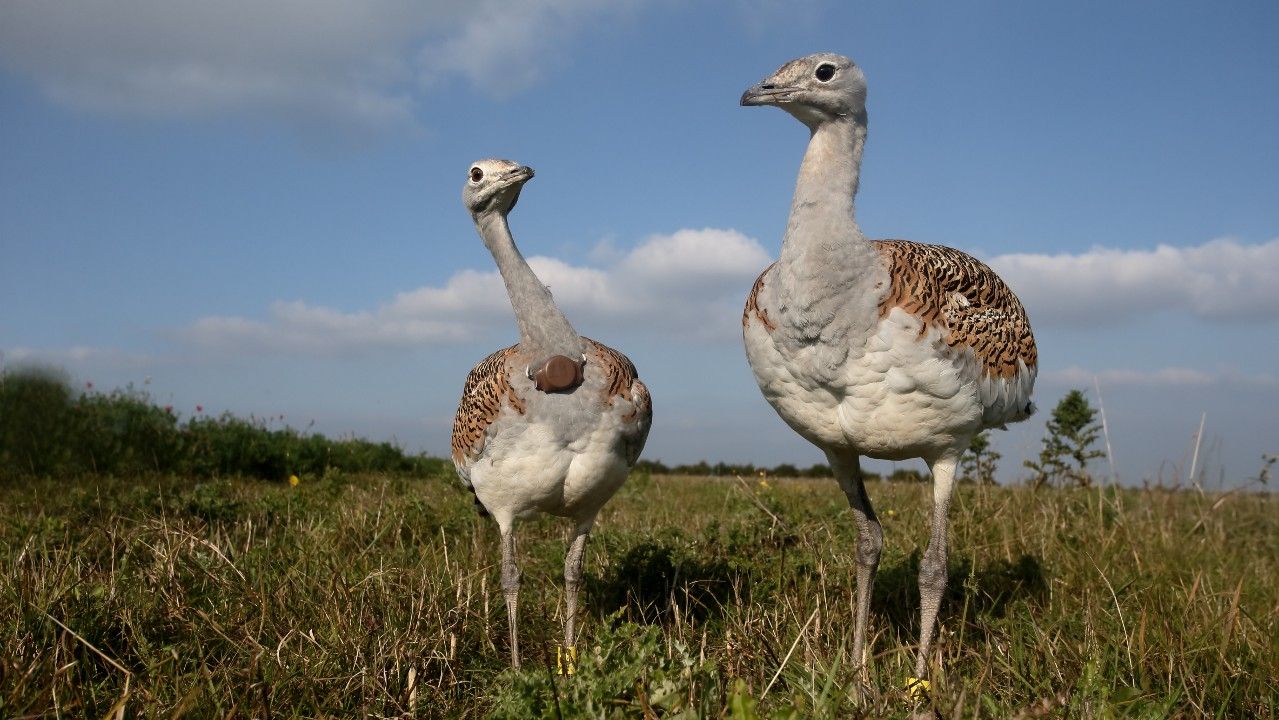
GREAT BUSTARD (OTIS TARDA)
Great bustards are the largest land bird in Europe, but are also found in Central Asia, Russia and Morocco according to The Royal Society for the Protection of Birds (RSPB). Males can weigh up to 31 pounds (14 kilograms) and stand almost 4 feet (1.2 meters) tall, which also means they are an easy target for hunters. Consequently, their numbers have been in decline throughout the years — more than 30% of the global population lost since the 1960s — and become nationally extinct in some countries such as the United Kingdom, according to BirdLife International. According to RSPB, the last great bustard was shot in 1832 in the UK, but was reintroduced in 2004 and currently houses a self-sustaining population of more than 100 birds, according to the BBC.
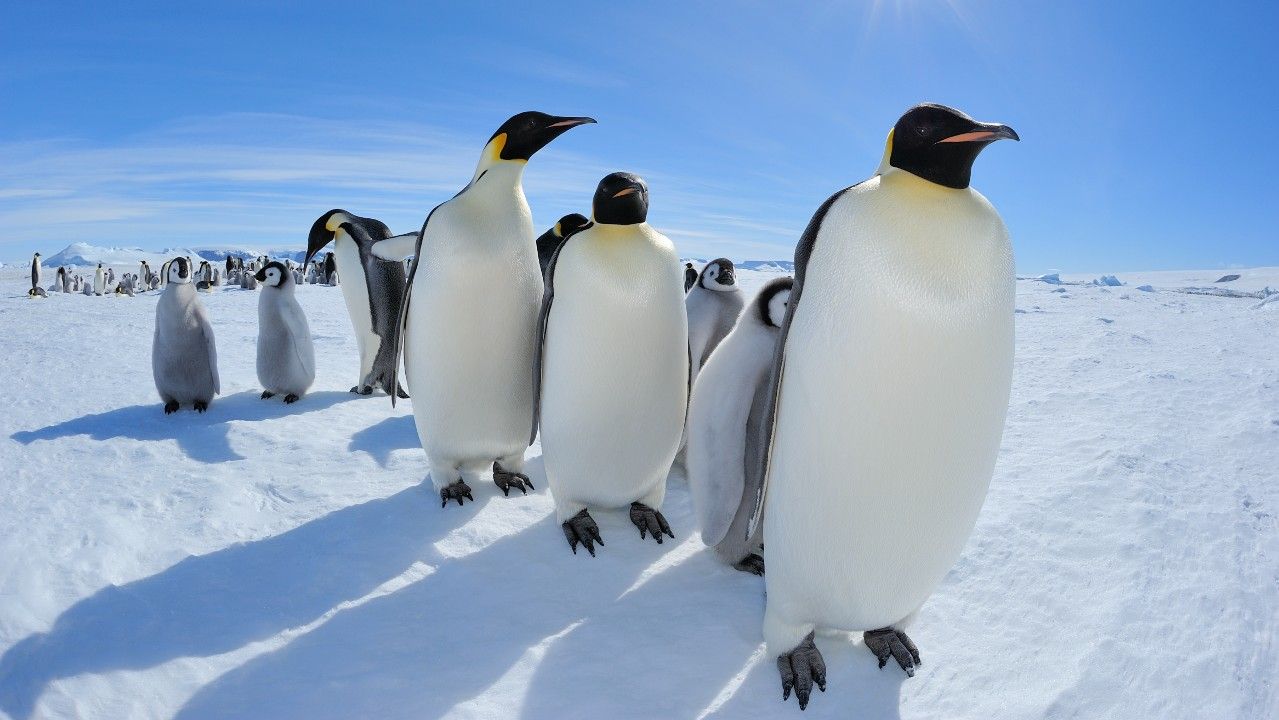
EMPEROR PENGUIN (APTENODYTES FORSTERI)
Of all the 18 species of penguins on Earth, emperor penguins are the biggest, according to the World Wildlife Fund (WWF). They stand around 4 feet (1.2 meters) tall and weigh around 88 pounds (40 kilograms), however this fluctuates regularly throughout the year. These flightless birds utilise their fat stores to insulate themselves against the harsh conditions of the Antarctic winter, along with several layers of scale-like feathers which would withstand up to 68 miles per hour winds before they ruffled, according to the Australian Department for Agriculture, Water and the Environment. In addition to their own insulation, emperor penguins huddle together in colonies to cut down heat loss by 50% and create a temperature of above 75 degrees Fahrenheit (24 degrees Celsius) inside the huddle.
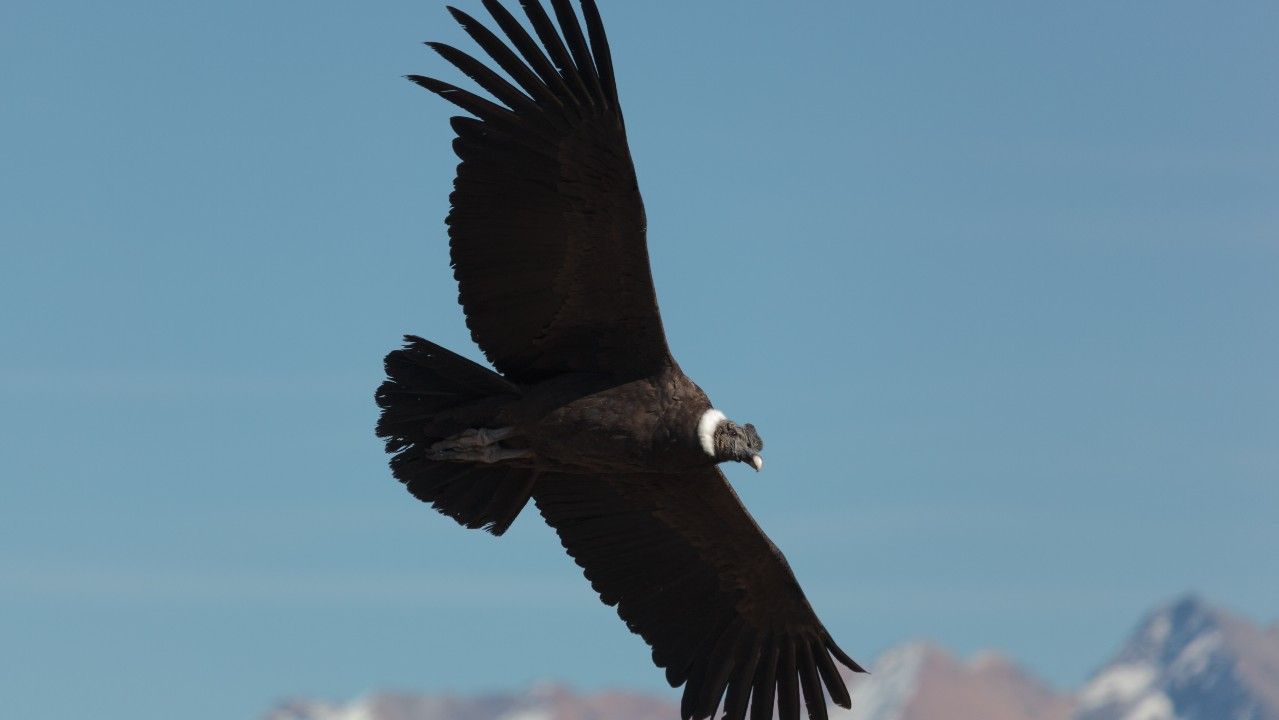
ANDEAN CONDOR (VULTUR GRYPHUS)
The Andean condor is the largest species of raptor on the planet and the second-largest wingspan of any bird — which spans around 10.5 feet (3.2 meters), according to the San Diego Wildlife Alliance. Along with their impressive wingspan, these birds can ascend to heights of up to 18,000 feet (5,500 meters) passing over the peaks of the Andes, according to Welsh Mountain Zoo. Due to their large wingspan, these birds can globe on air current with ease without expelling much energy. Andean condors are a species of vulture and, like many vulture species, aren’t predominantly hunters and scavenge their food from dying or deceased animals – around 15 pounds (6.8 kilograms) of carrion (dead or decaying flesh) in a single meal, according to San Diego Wildlife Alliance. The Andean condor also has a long lifespan of around 50 years in the wild and up to 80 years while in captivity, according to the Wildlife Conservation Society Peru.
More for You
Doctor shares what happens to our bodies moments before we die
KFC Is Changing Its Menu—Here’s What to Expect
Here's Everything Carrie Underwood Eats In A Day At 41—Including The Healthy Hacks From Her Own Backyard
If you use any of these 4 phrases you have higher emotional intelligence than most
These Are 10 Smells That Cats Absolutely Hate
Roku closes the barn door, badly, after a half-million accounts are compromised
Your senses will shut down in a specific order when you’re about to die

Pizza chain raises prices in California to offset new minimum wage law
‘Gladiator II' First Look Gets Thumbs Up & Loud Cheers From Exhibs At CinemaCon
'Pretty privilege' in job interviews is a real thing, say experts. But you have more control than you realize.
Hundreds of drugs in short supply, pharmacists warn
6 Foods You Should Never Feed Your Cat, According to Veterinarians
A key part of our bodies continues to live on years after we die
IRS used AI to access bank accounts of US citizens: Rep. Harriet Hageman
"None of them dudes wanted no smoke with Derrick Rose" - Rip Hamilton says superstars were scared of a prime Derrick Rose
Ted Cruz Gets Huge Boost in Texas
Meet the 55 newest dog breeds to get recognized by the American Kennel Club
Excellent used cars to buy today from just $1500
Jurassic World Star Joins Ben Affleck & Jon Bernthal in The Accountant 2
12 Concealed Kitchen Storage Hacks You’ll Want to Use Immediately

IMAGES
VIDEO
COMMENTS
The wingspan of the wandering albatross can reach up to 3.5 meters (11 feet), while the wingspan of the Laysan albatross is around 2.1 meters (7 feet). The large wingspan of albatrosses allows them to fly long distances over the open ocean, where they spend most of their lives.
The albatross is the bird with the longest wingspan of any flying animal - growing up to 3.2 m (10.5 ft), and these wings are meticulously adapted for soaring. The Guiness Book of Records claims the largest wingspan of any living species of bird was a wandering albatross with a wingspan of 3.63m (11 ft 11) caught in 1965 by scientists on the ...
A wandering albatross has the largest wingspan of any bird, 3.5 meters (11.5 feet) tip to wing tip.
107-135. cm inch. Wingspan. 2.5-3.5. m ft. Described as "The bird which made the breeze to blow" the wingspan of a Wandering albatross ( Diomedea exulans) is the longest of any bird. It lives up to its name when it takes fishing trips that last 10-20 days and can cover 10,000 km while using hardly more energy than when sitting on its nest.
The wandering albatross has the largest wingspan of all extant birds. Acidic Stomach. Wandering albatrosses mostly feed on squid, but they will feed on a variety of other prey, including fish, carrion of seabirds, marine mammals, and waste produced by fishing boats. These birds have to fly for extended periods to search for prey and will ingest ...
These remarkably efficient gliders, named after the Greek hero Diomedes, have the largest wingspan of any bird on the planet. Name: Wandering Albatross, Snowy Albatross, White-winged Albatross ( Diomedea exulans) Length: Up to 135 cm. Weight: 6 to 12kg. Location: All oceans except in the North Atlantic.
What is the wingspan of a wandering albatross? This bird has the widest wingspan in the world. The average span for a wandering albatross is just over 3 meters (10 feet), with a range between 2.51 and 3.5 meters (8 feet 3 inches-11 feet 6 inches. The largest verified wingspan measurement is 3.7 meters or 12 feet 2 inches.
An albatross aloft can be a spectacular sight. These feathered giants have the longest wingspan of any bird—up to 11 feet! The wandering albatross is the biggest of some two dozen different species.
The Wandering Albatross wingspan is the largest in the world. Albatrosses are giant birds in general in this respect; six of the top 10 longest wingspans belong to albatrosses. The Wandering Albatross is rivaled by the Great White Pelican, which comes in second place by over 6 inches on average. Of the top five longest wingspans, three belong ...
With wingspan of up to 11 feet, the Wandering Albatross flies with hardly flapping their wings. Instead, they depend on dynamic soaring, updrafts, and turbulence. Wandering albatrosses' wingspan of up to 11 feet and is the largest known of any living bird, and yet wandering albatrosses fly while hardly flapping their wings.
The adult Wandering Albatross appears entirely white from a distance. Close up, the fine black wavy lines on the breast, neck and upper back become visible. The bill can vary in colour, but is normally yellowish-pink. The white tail is occasionally tipped with black and the back of the wing changes from black to white with age.
Interesting Facts. The wandering albatross is the biggest bird in its genera and one the largest in the world. One individual lived to be 60 years old in New Zealand. She was named 'Grandma.'. Another banded individual was recorded to have traveled 3,730 miles in just 12 days. Wandering Albatross Wingspan.
The wandering Albatross has two sub-species as follows. Diomedea exulans exulans; ... The Wandering Albatrosses has the largest wingspan of any living bird, with a wingspan between 251-350 cm (8.2-11.5 ft). The longest-winged examples verified have been about 3.7 m (12 ft), but probably apocryphal reports of as much as 5.3 m (17 ft) are ...
The wingspan of an albatross can reach up to 11 feet, making it the largest of any bird species. ... The Wandering Albatross, famous for having the longest wingspan of any living bird, can reach up to 3.5 meters (11 feet). When it comes to evolution, albatrosses stand out for having adapted superbly to a pelagic lifestyle.
Description of the Wandering Albatross. This species of albatross has white plumage, or feathers, with darker wings. Their wing feathers are black, and speckled with varying degrees of white. Young birds have brown feathers, which become white as they age. This bird's wingspan is quite large, and averages 10 feet across, though some ...
DOI: 10.1098/rsos.211364. Wandering albatrosses, which are an iconic sight in the Southern Ocean, are highly adapted to long-distance soaring flight. Their wingspan of up to 11 feet is the largest ...
The wandering albatross is larger than the condor in terms of wingspan and weight. Here are some key points to note: Wingspan: - The wandering albatross has the largest wingspan of any bird in the world. - It can have a wingspan of up to 11 feet (3.4 meters) or even more.
The wandering albatross's wingspan is a marvel of nature. Its wings are incredibly long and broad, specifically suited to gliding over long distances. Although they may look cumbersome, these wings are perfectly designed to give the bird maximum lift while minimizing drag during flight. This allows the wandering albatross to fly great ...
The wandering albatross has a wingspan of around 8ft-11.6 ft inches. Yes, you read that right approx 11 long ft! That's way more than the average human height which is 5.5-5.9ft inches. As we know nature has its ways of adding beauty to make things functional, the world's largest seabird has such a long wingspan for various functions like ...
The Wandering Albatross holds the record for the longest wingspan of any living bird, with measurements reaching up to an astonishing 11 feet (3.4 meters). To put this into perspective, imagine a wingspan that exceeds the height of an average human adult. This remarkable adaptation enables the Wandering Albatross to cover immense distances over ...
The Wandering Albatross. One of the birds with the largest wingspans is the Wandering Albatross. This magnificent creature boasts a wingspan of over three meters, making it one of the largest wingspans of any bird. Its wings are perfectly adapted to help it traverse the vast oceans it calls home. Feeding Habits. The Wandering Albatross ...
It can travel great distances mostly by gliding and sailing. In terms of wingspan, Southern Royal Albatrosses are very similar to Wandering Albatrosses. The Royal Southern Albatross bird has a vast wingspan of more than 3 m. (9.8 ft). But on average their wingspan range from 2.9 to 3.28 m (9.5 to 10.8 ft). Wingspan.
Males have whiter wings than females, with just the tips and trailing edges of the wings black. The snowy albatross is the whitest of the wandering albatross species complex, the other species having a great deal more brown and black on the wings and body, very closely resembling immature wandering albatrosses.
WANDERING ALBATROSS (DIOMEDEA EXULANS) Meet the biggest bird in the world, at least in terms of its wingspan. These sea birds glide over the ocean with a wingspan of up to almost 11 feet (3.35 ...